On the first day of March I took delivery of a new Tesla Model 3 Long Range in dark blue with a brilliant white faux leather interior. It was something of a leap of faith and I was prepared for disappointment, especially after having run the ostensibly more luxurious and more capable Jaguar I-Pace for a year. So how did I get on?
I promised to keep you informed on progress and now, after seven months and 5,500 miles with Oskar the Tesla, is a good time to look at the pros and cons of the world’s most popular electric car.
There have been a few surprises with the Model 3. Some aspects which I expected to dislike are not an issue, while others I looked forward to, especially driver assistance functions, have been a little disappointing.
Readers will recollect that I am no stranger to electric vehicles, having leased a Nissan Leaf back in 2014 and owned a 2019 Jaguar I-Pace for twelve months until earlier this year. I wrote about my experiences with the Jaguar and concluded that, as a luxury SUV, it has few equals, irrespective of the method of propulsion. However, I did have reliability problems, primarily with the charger port mechanics and the charging system, and I suffered badly from range angst. The prolific and straightforward Tesla Supercharger network and the long range of the Model 3 were the major incentives to throw in my lot with Elon Musk and his merry band.
Quality and ambience
My Model 3 is part of the first batch of cars to arrive in England from the Shanghai factory, where right-hand-drive production is currently concentrated. With many stories of indifferent production standards suffered by Teslas from the Fremont, California, factory, I was interested to find out if I would have similar problems with the China-made vehicle.
I can get that one out of the way at the outset. I found absolutely no problems with the Model 3, apart from a bad transit scratch at the bottom of the driver’s door. Without a dealer network, Teslas appear to lack the PDI check normally performed by dealers. I’m sure there are checks on arrival in the country, but no dealer would deliver a car with a large multi-streak scratch on a door. However, the door was quickly and efficiently repaired.
The car was collected from a vast car park at Thorpe Park, an entertainment complex just west of London. It was March 1, the first day of the “21” number plate, so hundreds of cars were awaiting their owners.
Because of Covid, it was a contactless delivery. After collecting the keys and documents from a service counter, I found the car in the appropriate aisle, gave it a quick once-over and drove off. The experience could not have been more different from that of buying a conventional car.
The general panel fit (irregular gaps used to be a problem) is more than acceptable, in my view, and the paint is lustrous and, seemingly, of good quality. I say seemingly because only time will tell.
Interior trim is well executed and does not suffer from inconsistencies or manufacturing glitches. The “vegan leather” of the seats feels just like animal leather, although I have no particular preferences and would just as happily have had leather facings as in previous cars. However, despite feel and appearance, man-made materials do not breathe as well as cloth or leather and this can sometimes lead to sweaty moments on hot days, even with the air conditioning working.
I miss the ventilated, cooled real leather of the I-Pace seats. On the other hand, however, I find the Tesla seats more comfortable for long journeys. They have full electronic adjustment with individual driver preferences set by the key or smartphone app.
The first impression of the interior of the Model 3 is one of quiet, understated functionality. I wouldn’t call it luxurious, although it does exhibit the spartan, functional luxury that you enjoy with many modern technical products. The fascia and door materials are simple yet tasteful and enhance the rather stark, focused driver’s view.
With the full-length glass roof, extending from sunshade to boot/trunk with just a narrow roll bar above the driver’s head, the interior is bright and airy. Forward vision is amazingly good because of the absence of an instrument cluster, although the wide A-pillars do impede vision when turning on sharp corners. But this is a problem with most modern cars. Rear vision, not a strong point in modern cars, is adequate and much better than with the I-Pace which has a particularly narrow slot.
The Model 3 has a five-star safety rating and the company says that the all-glass roof is tougher than the metal roof of most cars. Far from being a safety risk, it is an asset, apparently.
There is lots of space for passengers and I’ve had no complaints on the few occasions I’ve carried rear-seat passengers. The absence of a transmission tunnel allows a comfortable flat floor and anyone sitting in the middle has an easy time of it. The rear seats are quite low, however, and taller passengers find their knees are pushed upwards.
Storage space is excellent for a traditional four-door car. On balance I now prefer an SUV hatchback layout, but I have had no problems with the rear storage. I looked at the SUV Model X, by the way, but it is just too big for my purposes. The floor area of the Model 3’s boot is huge and, while the fixed rear bulkhead does restrict loading (as you would expect with any saloon car), it really hasn’t been a problem for me.
The small glove compartment has no handle; instead, as with the front storage compartment, it can be opened only electronically when the driver is accredited. This is good and helps deter opportunistic thieves.
The underfloor rear compartment is larger than you find on many EVs and easily swallows the two charging cables, an emergency kit, air pump and other odds and ends. Even then, there is room to place a couple of Billingham bags on top, thus hiding them from view if the boot is opened.
The front storage compartment, the frunk, is also big enough to be useful. It’s comforting to know that there is this additional space available when needed. Since the compartment cannot be opened without switching on the car (there is no inside lever as you would find for the engine compartment of a conventional car) it is a good place to leave valuables. A thief would need to have the car key to be able to steal from the front compartment.
A final word on those white “leather” seats. I did worry about marks, but I was encouraged by other commentators who reported very positive experiences. So far there hasn’t been a blemish. I do keep handy a packet of baby wipes (a blog recommendation) to wipe away any marks but it hasn’t yet been unsealed.
All seats, including the centre part of the rear bench, are individually heated and the small, sporty steering wheel is also warmed when necessary. Seat cooling is not available on the Model 3.
While white is an unusual colour for car seats, and seemingly impractical, it does emphasise the airiness of the cabin and nicely complements a dark outer colour such as blue or black. I’ve even seen white Teslas with white seats and, oddly, this combination looks striking and isn’t as daft as you’d think.
In conclusion, then, I am very happy with the fit and finish and the quality of the materials. Nothing has fallen off, nothing rattles or vibrates and I really cannot complain. Tesla has done a good job with the China-made 2021 model, despite some reservations over the quality of earlier cars.
Technology
Keyless entry
These days, keyless entry has a bad name. Far too many luxury vehicles are stolen because thieves have been able to either clone the transmitter or amplify the signal. Insurance premiums have rocketed as a result.
Tesla has one of the most convenient walk-up-and-drive systems but is also immune from cloning or signal misappropriation. As standard, the Model 3 comes with a couple of simple keycards which are placed on the door pillar to open the car and then moved to the centre console so it can be driven. However, I regard this as an emergency fallback and I keep one of the credit-card-sized items in my wallet just in case.
I use the Tesla smartphone application exclusively to unlock, lock and drive the car. It operates transparently — just walk up to the car, open the door and you’re ready for the off. When you leave the car it locks itself and beeps the horn in confirmation. Couldn’t be simpler and it is quick and secure (provided you don’t lose you phone, but then you could lose a key).
For greater, almost fool-proof security I have set a PIN which is entered on a panel that appears on the control screen when you enter the car. It’s worth the extra time it takes and it ensures that the car cannot be moved without knowledge of the PIN.
Tesla offer a standard remote fob but it’s something else to keep in the pocket and possibly lose. It also reduces vehicle security, putting Tesla on par with other cars with keyless-entry fobs. Your smartphone is always with you and you are less likely to lose it than a key. And, if you do misplace it, just use the key card from your wallet.
Controls
Tesla control layout, especially that of Models 3 and Y, is the one area that causes endless discussion. The Model 3 is nothing if not radical in this respect.
I fully expected to hate that single, large tablet of a screen that controls almost all functions of the car. I believed I could not live without a head-up display (HUD) showing all the vital driving data. I remember writing, in relation to the Jaguar’s excellent HUD, that I didn’t think I could live without a similar display in future cars. In particular, I worried that the speedometer in the top corner of the screen would be difficult to see.
These worries were the reason I cancelled my order for a Model 3 in January 2020 and bought the Jaguar instead. It turned out to be a costly mistake because I now realise I would have been happier with the Tesla.
In fact, I bought my current Tesla a year later despite that big screen, not because of it. Now, after driving so many miles, I’d buy it for the single screen. I have accepted the logic of having one soft control panel that can be updated by overnight-delivered software and which can totally transform the driving experience from one day to the next. In five years’ time, the controls and layout on that screen will replicate those on the latest Tesla.
The lack of buttons and knobs was definitely a concern, although I understood that this was a necessary corollary of the software-upgradable driving experience. Coming from normal cars (and even the electric I-Pace had a fairly conventional fascia with lots of buttons), I worried about not being able to find important controls (such as those for wipers, heating and navigation) when on the move.
Glad to say, I am now fully at home with screen control and much prefer it to physical knobs and buttons. I make extensive use of voice commands such as “navigate to”, or “stop navigation”; “switch off steering-wheel heating”, or “set temperature to 21 degrees”. Who needs knobs? It’s just a matter of getting used to Tesla’s radical approach.
The Model 3 sports just four physical driving controls other than the accelerator and brake — the indicator stalk, the gear stalk (which I now call the driving stalk because changing gear is the least important of its functions) and two “soft” wheel-mounted scroll dials which function as adjustment devices depending on the mode. Think of them as two mouses.
At first, there is a sense of deprivation. Is it possible to drive a car without all those buttons to press, knurled wheels to twiddle, knobs to pull, levers to lever? I did wonder.
The odd thing about the Tesla, though, is that almost all these reservations disappear after driving for a few miles. My biggest worry, the siting of the speedo, turned out to be unfounded. I was soon comfortable with the placement in the top corner. The screen sits high, so the speedo is constantly in view, almost like a head-up display but slightly off to the left (if you drive on the left, as we do in Britain).
If you think I’m spouting nonsense, I recommend a long test drive (a dealer demonstration for 30 minutes isn’t enough by a long chalk) and I am sure you will be convinced. I love the way in which all the important data, including speed, legal limit and selected cruise limit are in a row at the top of the screen.
I’m a fan of the column-mounted “driving stalk” as I’ve taken to calling it. Changing gear is an incidental function on an electric car because there are no gears and no need to take steps to maximise torque. Maximum torque is always available. So, while the stalk allows selection of drive and reverse, with a press-in park button on the end, its main function is to control the autopilot. Press down once to engage adaptive cruise control, twice in succession to select adaptive cruise control with lane-keep assist.
To cancel assistance, one upward flick of the stalk does the job (or, of course, touching the brake pedal has the same effect).
Incidentally, cruise speed can be adjusted in relation to the prevailing speed limit by an absolute value, for instance, 5 mph, or by a percentage that is probably more sensible. Not that I would ever consider fiddling with my cruising speed, you understand.
Entertainment
The Tesla comes with a full entertainment package, including Netflix, Spotify and access to the internet. There are also games and other distractions, including Dog Mode (to maintain cabin temperature and display an “Owner back soon” message on the screen). Access to YouTube and Netflix is useful occasionally (it doesn’t work while driving of course) but I am not interested in the rest of the gimmicks. Let Elon have his fun.
Sentry Mode is perhaps the feature you will find most useful. The car keeps a running video of its surroundings, front, side and rear, and automatically saves a clip if anything of concern happens.
Alternatively, the driver can sound the horn (a natural reaction if something happens, such as sharp braking in front to precipitate damage and an insurance claim) to save the clip. Sentry Mode also keeps an eye on the car when it is parked and stores evidence of any special events, such as nearby people, potential thieves, door dings. There is, therefore, no need to add front or rear cameras to a Tesla.
Self driving
A big subject, especially since Tesla claims to have the most advanced driver-assistance system on the market. They offer a “Full Self Driving” package (FSD) which gives the car access to all the latest driver-aid developments in the future. It is another leap of faith.
I confess that I purchased FSD, more in hope than confidence. Currently, all FSD offers in addition to cruise control and lane-keep assist is an auto lane change function, “Navigate on Autopilot”, traffic light response and parking aids, including the ability to summon the car. Many of these functions are hobbled in Europe by over-zealous regulation and I imagine that driving a Tesla in the United States is a more hands-off experience.
The self-driving features are pretty limited and not dissimilar to what you will find on many modern cars. But basic adaptive cruise and lane-keep assist are implemented brilliantly. The system works more reliably and more effectively in the Tesla than in any of my previous cars equipped with similar technology (Porsche Macan and Jaguar I-Pace, for instance).
Of course, it is essential to stay alert and keep your hands on the wheel. Only a fool would think otherwise. But, as with most other systems, proving you are awake can be frustrating. It isn’t enough just to keep your hands on the wheel, you must apply slight turning force periodically or the system will cancel. I think a little more faith, falling short of tricks such as lodging an orange in the steering wheel (yes, it’s been done), would be welcome.
Provided you do prove you are still alive frequently enough to satisfy the computer, the car will smoothly change lanes on motorways and highways. I recommend selecting “Max Max” lane-change assistance because the alternatives are very much “Cautious Claude” and you’ll hate them. Unfortunately, the car may be willing and capable of changing lanes unaided but in Europe, it isn’t allowed to operate without driver confirmation.
In this country, a lane change has to be initiated by pressing the indicator in the required direction of travel (the driving display offers an overtaking recommendation if the traffic in front is travelling too slowly, but you must confirm the action).
Once this has been done, the car will choose its moment and execute a very smooth overtaking manoeuvre. It is very relaxing on a long motorway journey and somewhat safer than manual changes in that the vehicle’s cameras have a better all-round view, especially of the blind spot.
Traffic light assist works particularly well. I use it all the time when driving on basic adaptive cruise control or with auto-steering. The car recognises lights and will beep before slowing down in anticipation of stopping.
This happens irrespective of whether the light is red or green and is, in effect, a sort of dead-man’s handle. If you do nothing, the car will slow and stop at the line. That’s pretty useful if you’ve died in the previous few minutes; you will never run a red light. But if the light is green and you think you have enough time, flick the driving stalk down or caress of the accelerator pedal and you’ll carry on without slowing. It’s up to you, and it’s a fail-safe system that does the job really well. Again, it is very much “assist” rather than “do”.
Many of these functions are difficult to explain and overlook the fact that they soon become second nature and really do aid driver concentration and reduce the risk of an accident.
Now we come to “Navigate on Autopilot”. In theory, this option allows the car to choose lanes, enter and exit highways and get you to your destination without intervention (provided it is frequently reminded you remain compos mentis and in a position to take over immediately if necessary).
Unfortunately, with the need to confirm lane changes (and exit motorways) in Europe, the system is currently more trouble than it’s worth. At least in my short experience. We are a long way from a Tesla being able to drive itself door to door, particularly in a congested country such as Britain where roads are narrow and cluttered with so many restrictions that even an intelligent and highly aware driver can get confused.
There are two principal worries. One is that the autopilot system cannot currently cope with roundabouts, of which Britain probably has more than anywhere else in the world. Second, and this is unforgivable, the system appears not to recognise speed-limit signs by camera observation, as is normal in most cars these days. As far as I can tell (and I haven’t had written confirmation from Tesla) the Model 3 appears to rely entirely on GPS map data.
As a result, the Model 3 doesn’t respond to temporary limits such as those at roadworks and will power on at the limit allocated to the road by the sky gods. It also doesn’t reliably identify the many 20-mph limits that are springing up throughout our towns and cities, probably because of out-of-date mapping. So, to rely currently on Tesla autopilot is a sure-fire licence loser.
Another black mark is that the self-driving function does not respond automatically to speed-limit changes, even though the amended limit shows on the screen and the system is therefore aware of the new limit. Instead of changing speed to reflect the higher or lower limit, the car requires confirmation. This isn’t explained in the manual, but I have worked out that an upward flock of the gear stalk (to switch off cruise) followed by a download flick causes the car to adopt the new limit. Another method is to press the new limit symbol on the screen, but this is distracting and potentially dangerous.
So far, I have failed to get any explanation of this problem with limit changes. I suspect there is a legal reason and Tesla takes the easy way out by expecting driver confirmation.
Tesla fans may jump in here tell me I’m talking nonsense. If they do know how any tricks, I am all ears. If not, Elon Musk should be all ears, although it’s generally assumed that he hears only what he wants to hear. I should point out that local regulations often influence the capability of automatic functions. It is quite possible that in some markets Teslas can perform tricks that are banned in Europe.
Phantom braking is another odd problem that is often discussed in forums and blogs. It was a problem that now seems to have been cured. The Tesla would suddenly brake on the highway if the cruise system got confused (sometimes in strong sunlight or heavy rain from my experience) and imagined a potential obstacle.
In my experience, the incidence of phantom braking was almost always on a highway when a vehicle in front moved into or out of an adjacent lane. Sometimes it happened when a large vehicle was on or slightly over the lane markings. The system senses an obstacle and applies the brakes which, in one sense, is what it’s supposed to do. Better safe than sorry.
Within the past month, however, software updates seem to have addressed this issue and I have experienced no phantom braking recently. In any event, it’s a minor inconvenience requiring a tap on the accelerator or a downward flick of the driving stalk to tell the car to resume the set cruise limit.
There are two further features of the full self-driving package that need a mention. Autopark works as well as most similar systems (that is, good in parts), although, thankfully, it does not require driver intervention in choosing the direction of travel. In many cars, you are instructed when to select a drive or reverse during the manoeuvre and this is a distraction. Once the parking space is selected, either perpendicular or parallel, the Model 3 will do the rest, the wheels moving and the forward/reverse selection taking place without intervention.
There are annoying limits in that the Autopark feature depends on adjacent cars being visible. The Tesla will happily park between two vehicles, but it will not enter a bay if adjacent spaces are unoccupied. In a typical supermarket car park, for instance, it will always choose to park between two cars rather than approach a lane of empty bays.
Note that the system was updated in October 2021 to allow the car to park in perpendicular spaces by relying on bay markings rather than needing an adjacent vehicle. So far, this does not apply to parallel parking spaces.
Some manufacturers have systems that recognise the white lines of parking bays and do not require the presence of adjacent cars. Autopark is good in tight situations, however, and makes a great job of centring the vehicle accurately. I am sure that Tesla will update their system to recognise bay markings when they feel that the system can perform safely.
Another not-so-good but much-discussed facility is “Summon”. It’s a Tesla party trick. In theory, you can stand in the car park and the Model 3 will drive itself to you. While this might work in some markets, it doesn’t work for me. I suspect the system is hobbled by European regulations to the extent that is a fairly useless gimmick.
For starters, Summon in Europe relies on the controlling smartphone being within Bluetooth range and, in my experience, I need to stand almost next to the car in order to get it to move. Then it senses I’m in the way and stops. However, Summon has been useful on a couple of occasions when cars have parked too close for me to open the driver’s door. Using the smartphone app, it’s relatively easy to get the car to drive itself out of the bay. But this is about as adventurous as Summon gets for now. Lots of potential, though, and an update could arrive at any time. Tesla drivers are frequently surprised by developments.
All in all, then, Tesla’s self-driving system is a bit of a curate’s egg—good in parts. It’s a very good effort if you regard it as driver assistance rather than a self-driving system. I suspect that most problems are caused by local legislation which is often influenced (dare I say it) by manufacturers who are worried by Tesla’s competition. For us Britons, there is now at least some possibility that more advanced auto-pilot functions could be adopted independently of EU legislation.
FSD is a come-on, I suspect, and those who’ve shelled out upwards of $10,000 for the package are currently disappointed. But such is the speed of new ideas and system updates that all this can change in a few hours. More steps towards autonomy will be taken, but I am not anticipating “full self-driving” any time soon.
The only way it would work is if every other car on the road is also autonomous, free of human impatience. A mix of aggressive, risk-taking human drivers and over-cautious computers make it improbable. “After you, Claude” must be the computer’s first reaction and that doesn’t currently work.
I’ve mentioned system updates and these arrive almost weekly. The car will update itself overnight and when you next drive you are presented with a list of changes. There was a major drivers’ view update (involving resizing and repositioning the drive view and the location of the speed information) just before I took delivery of the car, but many more small improvements (such as the tempering of the phantom breaking phenomenon) have been made since. I can always be confident that the car I am driving is as up to date as the one being delivered to an owner next week.
On the road
The Tesla Model 3, even the Performance model which is one step up from my “long-range” car, is not a sports car. But it does handle well and most drivers who come from a BMW 3-Series, Audi A4 or similar will be satisfied, if not overwhelmed. The drive-by-wire steering lacks the instant response that you will find on, say, a Porsche 911 or Boxster, but most modern systems (including those on the BMW and Audi) are now vaguer and less precise than in the past.
Nevertheless, I am very happy with the way the car handles; my sports car days are over for the moment. I am sure more spirited drivers could pick a few holes in the Tesla’s handling. Yet the Model 3 feels smaller than it is, and the lack of an instrument binnacle means that the dashboard is very low, resulting in extraordinary levels of forward vision.
The ride is firm but controlled and the car copes well with the variety of surfaces we encounter every day. Coming from the air-suspended Jaguar I-Pace, I expected to be disappointed by the ride of the Model 3. I’ve now forgotten the Jaguar so cannot do a back-to-back comparison. However, I feel that the suspension characteristics are not as good as you will find on a premium German vehicle.
Obviously, the Model 3 isn’t an SUV, so variable suspension and off-road capabilities don’t come into the mix.
Most electric cars are relatively quiet because of the almost total absence of motor noise. As a result, tyre noise tends to become more noticeable. While the Model 3 is not the quietest car I have driven, road noise is subdued and the level of disturbance is perfectly acceptable at speed. Wind noise was often cited as a fault with the Model 3, but I have not noticed this as a problem. Possibly the new (for 2021) double glazing on the front side windows has contributed to the improvement.
In one respect, though, this is a full-blooded sports car. The acceleration (0-60 mph in 4.2 seconds) is typical of most higher-end electric cars, but the Tesla feels much more eager and capable than other EVs I’ve driven. I do not covet more performance, although it’s interesting that I could instantly shave one second off that 0-60 mph time by pressing a button on my smartphone.
The performance boost package is available at the flick of the wrist by paying an extra £1,500 to Tesla. That’s a lot of money for a 16% boost in acceleration, but if performance is your thing it’s probably a cheap option. Cheaper, at least, than taking your petrol engine to the tuning shop.
If nothing else, this level of over-the-air update hints at the future of car ownership. Already, many manufacturers find it cheaper to install extra features (such as rear-seat heating elements) which can be activated by an additional payment at any time for an extra payment. So it is with performance. A software update can transform the acceleration of the motor you already own.
Regenerative braking
If there is one innovation that differentiates an electric car from an internal combustion engine, it is the so-called regenerative braking feature. This is always mentioned where EVs are concerned, and emphasis usually is placed on the ability to use braking power to generate power, thus replacing some of the energy you’ve used.
But that is only a tiny part of the story. Regenerative braking is the key to smooth and stress-free driving; it is the single most important difference from driving a conventional car. When you lift your foot from the accelerator, the car slows down rapidly. It’s akin to applying the brake in a very controlled manner and, in fact, it almost entirely replaces the need to use the brake pedal in general driving. You can drive hundreds of miles using just one pedal and, after a bit of practice, it is possible to judge accurately how to feather the accelerator to ensure a smooth stop in the right place.
As the car is slowing, it is indeed generating electricity, which is an added bonus. But the smoothness that comes from throttle-only driving is amazing. Tesla does regenerative braking very well indeed and I can say that the Model 3 is the smoothest car I have ever driven. And I’ve driven the lot in my lifetime. Some cars offer varying degrees of regenerative braking to choose from, some offer too little (such as the Porsche Taycan), but with Tesla, it is either on or off. I have never even considered turning it off because it’s the best bit of the EV driving experience.
One-pedal driving is aided by Tesla’s excellent Hold function. As the car stops the brake is applied automatically. Hold works particularly well in stop-start town driving when the adaptive cruise control is in operation. The Tesla will come to a smooth stop behind the car in front. It will then move forward when it senses the car in front moving. There is a slight delay, which can be frustrating, and I often flick the driving stalk to prompt a quick restart. Another slight frustration is that the car always stops further from the vehicle in front than I would allow. With very congested roads, too much space between queuing cars is wasteful and adds to delays. Tesla could well decide to reduce this gap in future software updates.
But the system works reliably. If you hate automatic hold and prefer a more conventional experience, you can switch it off. At the same time, you would probably want to turn on the artificial creep function so that the car creeps forward like a normal ICE automatic when there is no foot on the brake pedal.
However, I doubt that many EV drivers choose to emulate a petrol engine. Creep off, hold on, adaptive cruise set and the Tesla can be driven all day without touching the brake pedal. One-pedal driving is here and it’s a revelation.
Long journeys
I haven’t mentioned range angst so far, simply because it doesn’t often feature in the Tesla owner’s experience. It is becoming less and less of a worry as battery technology and range improve. The Model 3’s range is more than adequate and the Tesla Supercharger network is there for you on long journeys (provided you don’t stray too far from the main highways).
With my previous EVs, every long journey was an adventure, requiring some advance planning and research. Public chargers were often out of action and, in most cases were limited to one or two at any given location. Often, the maximum charging rate was only 50 kWh, which is inadequate unless you have an hour or two to kill. With Tesla, it isn’t unusual to find ten or twenty fast chargers (of more than 100 kWh). Except on one occasion, a busy holiday weekend, I have never arrived at a Supercharger location and had to wait for a “stall” to become free. But so many Teslas are now being sold that charger congestion could become a real problem. Let’s just hope that Elon continues expanding the network.
The Model 3 Long Range is a very efficient car. Despite sporting only 75 kWh of battery storage, it has an official range of 360 miles. This compares with the Jaguar I-Pace’s official range of just under 300 miles from its 90 kWh battery. However, no electric car will achieve the official range in normal driving. It’s just a guide for comparison purposes.
During the last summer (more juice is used in the winter) the Model 3 always shows 340 miles available on a full charge. This is remarkably only 20 miles less than the official figure. With the Jaguar, 240 was normal, some 60 miles less than the published figures. This gives you some idea of the vast gulf between the two vehicles; the Tesla can travel 50% further on less electricity. However, as with the Jaguar and, presumably other EVs, this range shown after a full charge is rather misleading and hard to equal, much depending on the style of driving.
On long motorway trips at the UK national speed limit of 70 mph, the car will return about 260-270 miles on a charge. Highway driving uses more fuel than stop-start town driving, for instance, but this is a creditable performance. These days I tend to stop every 100-150 miles to recharge myself, never mind the car. And a quick 20-minute break hooked to a Supercharger will add another 150 miles to the battery.
Bear in mind that EVs do not have a fuel reserve and, since charging points aren’t as prolific as fossil-fuel stations, few drivers are happy to let the gauge fall below 10%, which represents about 25 miles of travel in the Tesla. For my part, I get antsy when the range drops to 50 miles. My settled method of charging is to grab it while you can.
I don’t run the battery into dangerous territory and then wait for the car to charge back to maximum. I just plug in whenever I need a rest stop and take whatever electricity I can load while I’m there. It’s so easy to plug in and leave that it becomes second nature to park the car at a charging point while having a coffee and visiting the facilities.
I ought to mention that my Model 3 came with plastic clip-on wheel disks to aid fuel economy. Some owners seem to like them, but I find them ugly. I removed them, replacing the centre bit with Tesla’s inexpensive caps, and now rather like the naked, standard alloy wheels. Leaving the trim on the wheel should increase range by up to 5% on long journeys, so it’s a choice you need to make. I chose appearance over the economy. I was not tempted to specify larger wheels because they increase fuel usage.
Provided you stick to main routes, there is always a choice of Superchargers, many at motorway service stations. Some are hidden away in industrial estates (often without comfort facilities) or in hotel car parks, but the car will always get you there and will pre-condition the battery before you arrive.
In some cases, such as at the London Heathrow Supercharger plaza, you must pay for parking in addition to the cost of the electricity. However, convenience is the big thing, and driving across Europe is easy with a Tesla; less so with any other make of car.
That said, the general public charging situation in the UK has improved significantly in the past 18 months. Companies such as Instavolt, Gridserve and Ionity are installing ultra-fast chargers at a rate of knots. Non-Tesla drivers are now finding life easier and can travel with less angst. Credit card payment is gradually taking over from an array of proprietary cards.
Of course, in addition to access to the dedicated Supercharger network, the Tesla Model 3 driver can also use every other public charger out there. Older Teslas, including recent Model S and Model X cars, will need an adaptor to convert to the CSS socket system used by most third-party energy suppliers.
When it comes to EV charging, there are Teslas and the rest. With a Tesla, you arrive at the Supercharger, plugin and walk away. There is no need for credit cards or company-specific cards (of which I have a wallet full from Jaguar days), the pump handshakes with the car and Tesla does the rest.
Charging
Most of my charging is done overnight at home. I have a standard 7.5 kWh pod which adds 30 to 35 miles of range per hour. Home electricity is much cheaper than using public chargers (at least in the UK), but see the section on costs below. Since the range on a full charge is mostly over 300 miles, I can easily do all my normal daily motoring without needing public chargers.
Tesla allows a time to be set for the start of charging. I have the system set to start at 12.30 am to coincide with the cheap night rate. There is no way to stop charging at a specified time, however, but the maximum battery charge level can be stipulated. I join most people in setting 80% as the normal limit (except when I’m planning a long journey on the following day) and it is seldom that the charge time exceeds the four-hour limit on my cheap rate.
The Model 3 accepts AC charging at a maximum of 11 kWh and DC charging up to 250 kWh. The capacity of the battery is 70 kWh. A standard domestic 13-amp British socket will supply electricity at the rate of 3.5 Kilowatts per hour through the special cable supplied by Tesla.
Navigation system
While the Google-based navigation system is generally good, it has a major failing which I find frustrating. Unlike almost any other system I’ve used, it is not possible to set the parameters to exclude motorways. You can avoid tolls or ferries, but not highways. As a result, planning a scenic, stress-free journey on minor roads is challenging.
On the plus side, I appreciate the Supercharger display which shows nearby locations and how many bays (Tesla calls them stalls) are free. I also applaud the integration with Google Maps. I can plan a route on my phone and then share the details to the Tesla app which then synchronises with the car. Integration with Google Calendar is also good. Enter the location of an appointment and the car will automatically have the destination pre-selected when you leave home at what it senses is the appropriate time. I don’t normally use Google Calendar, but I have an Apple calendar group for car travel which is synced automatically with Google.
Costs
Fuel
Home charging is cheap, at least 50% cheaper than using public chargers. My energy provider, Octopus, offers a cheap night rate of only 5p per unit (for four hours between 12.30 and 4.30 am) which is good for adding 120-140 miles of range to the car. Only if I am planning a long journey the following day do I need to pay the full current domestic rate of 13.8p per unit (including taxes). On long journeys, electricity can cost from 25p to 70p per unit, not far off fossil fuel rates.
If you wish to use Octopus Energy, which I find to be well priced and effective, use this referral code share.octopus.energy/pink-zebra-525 and we will both get a £50 discount on our next bill.
For the time being at least, electric vehicles are cheap to run provided you have access to a home charger. Over my 5,500 miles with the Tesla, 4,500 of those miles have been powered from home at 5p per unit. Since the Tesla is frugal, covering about 4.5 miles on one unit, I’ve used exactly 1,000 kWh at a cost of £50; The impact on the electricity bill is not noticeable.
The other 1,000 miles were powered by Superchargers and would normally have cost about £90. As it happened, though, I had a thousand free Supercharger miles as part of the Tesla referral scheme (which is now sadly defunct).
Assuming, however, I had paid for public charging, my 5,500 miles would have cost a total of £130 in fuel. This is about a tenth of the cost of a typical conventional car of similar performance.
It’s worth noting that many supermarkets, hotels and other facilities still provide free charging at 7.5 or 11 kWh. The canny EV owner will always plugin for a free puff. If I’m away for an hour, my car will gratefully accept 30 miles of free-range. It’s all part of the fun of owning an electric vehicle.
Never knowingly pass a friendly socket.
Depreciation
We’re in an odd situation at the moment, with severe shortages of new cars — particularly EVs — throughout the world. As a result, my seven-month-old Model 3 with 5,500 miles on the clock is probably worth almost as much as I paid for it. This is a fluke, of course, and reality will soon set in. Nonetheless, Teslas do hold their value well and I am expecting depreciation to be below average for the class of vehicle. There is currently a big demand for cheaper and second-hand electric vehicles, so this will support resale values.
There is no getting away from the fact that EVs are more expensive to buy than an equivalent petrol or diesel-powered car. So this has to be considered when it comes to depreciation and fuel costs.
Standing charges
Here’s another winner for the EV. There is no road tax in the UK, so the only costs are for insurance and, after three years, the annual safety inspection. I can also drive through central London without paying the £15 per day congestion charge (although that concession will end in 2024). Insurance for me turned out to be about the same as for an equivalent petrol or diesel car, surprising given the phenomenal acceleration of which this car is capable. For some reason which I don’t understand, the insurance cost was 40 per cent less than for the Jaguar I-Pace. However, don’t read anything into these figures since my quotation may have been a loss-leader which is so common in the insurance business. The time to tell is at the renewal date next Spring.
Maintenance
Maintenance costs of electric cars are also low, with (at least in the case of Tesla) no fixed service schedule to worry about. Electric motors require almost no maintenance and will run for hundreds of thousands of miles before they wear out. Brakes are seldom used on an electric car because of the brilliant regenerative braking facility, so pads and discs have a much longer life than normal. Furthermore, the number of moving parts in an EV is a faction of those in a normal car, so there is a lot less to go wrong. Most potential problems can be rectified electronically, often by routine software updates.
Eventual battery replacement is often cited as a major disadvantage of electric vehicles. Tesla, in common with other manufacturers, offers free replacement of batteries if they fall to less than a certain capacity within a specified period. In the case of Tesla in the UK, this is eight years and 70%. However, many early Teslas from 2012 are still going strong after several hundred thousand miles, despite the fall-off in storage capacity. We can also reasonably assume that after eight years, battery replacement on my Model 3 will be much cheaper than it would be now. Of course, for the buyer of a new car, all this is academic.

All in all, once you’ve taken the initial hit on purchase cost, EVs are cheap to run. You probably won’t recoup the difference over a year or two, but it certainly narrows the gap in the long term.
Since Tesla has no conventional dealer network, service requests are made by using the smartphone app. You can upload pictures of any damage and can choose a convenient service centre. There are two within five miles of my home in West London, but of course, many owners will have to travel further. I have had only one experience of a service appointment and that was shortly after delivery for the rectification of the door damage. Everything was handled efficiently and the experience was, if anything, smoother than with a dealer appointment.
On one occasion I stopped to use a Supercharger at the Park Royal Tesla service centre and was surprised to be accosted by a staff member bearing a watering can and a tyre pump. His job was to check water and tyre pressure on all the cars arriving for a top-up. I left my charging session with a very warm feeling for Tesla.
There are always two sides to any story, however. A friend, who purchased a Model X a few weeks before I took delivery of my Model 3, has needed several service centre appointments, largely to deal with malfunctioning seats and gullwing doors. All I can do is report on my car, which has been totally reliable.
Buying a Model 3 Long Range
I chose blue paint (£1,000 extra), white upholstery (£1,000) and the full-self driving package (£6,800). The total cost of the Model 3 was £55,690 after the then government grant of £3,000. The same car would now cost £57,490 after Tesla reduced its prices to compensate for the loss of the grant.
Since I bought my car, there is an additional but cheaper Enhanced Autopilot package for £3,400. This includes Navigate on Autopilot, Auto Lane Change, Autopark, Summon and Smart Summon. The full self-driving package still costs £6,800 and adds traffic light and stop sign control, plus any future driving developments, including auto-steer on city streets which is due soon.

Conclusion
As I explained at the top of this article, buying a Tesla was for me a leap of faith. I was almost expecting to be disappointed after all the hype. But after seven months I can say that I have never been happier with a car.
Despite the odd niggle, owning a Model 3 is a satisfying and painless experience. The minor problems I’ve mentioned in relation to autopilot and speed limited recognition could be rectified by a software update tomorrow, so I’m not worried. The car is economical, trouble-free and a pleasure to drive.
I also appreciate the feeling of belonging to the Tesla world in much the same way that I love the Apple ecosystem. Even Supercharger plazas can be social occasions once you get chatting to other owners.
Buying a Tesla is also an easy experience. There are few options and choices. You can even increase the performance of your car later by using the Tesla app and paying a £1,500 premium.
With many cars, especially those from German premium manufacturers, the options list (including driver assistance aids which are all standard with Tesla) is as long as your arm. As a result, it’s said that no two Porsches are the same because of the vast range of options. This is good if you want a bespoke vehicle, but for most people a more simple choice is preferable and Tesla offers this easy way of buying.
Saving the planet is not the reason I love electric cars. I love them because they are brilliant to drive, they are so responsive, so smooth and so refined.
Am I happy with the Tesla? Well, after seven months with any car I am usually poring over the car mags, reading road tests and making lists of pros and cons. I seldom keep a car longer than twelve months.
With the Model 3, I have not been tempted to look around. At the moment I cannot think of any car that I would sooner own, other than another Tesla. I am not tempted by Mercedes, Audi or Porsche, a Polestar, a Hyundai or a BMW despite knowing that some of these cars would have a more luxurious cabin and, perhaps, sharper handling and better-sorted suspension than the Model 3. But things change. If the public charging infrastructure is very much improved, I might stray from Tesla.
For now, though, I would be as reluctant to leave the comfortable world of the Model 3 as I would ditch my iPhone for an Android device. As an all-round package, despite my reservations, it is a very happy choice.
My next car could well be a Tesla Model Y with its aluminium chassis, sharper handling SUV practicality. But I’m in no hurry.
Software/driving updates
This is a list of the updates to the Tesla Model 3 software and driving experience since the publication of the above article.
- Added ability to set a charging end-time which is useful for taking full advantage of off-peak rates (October 2021)
- Added ability to park in perpendicular spaces relying on camera view of parking lines (October 2021). According to TeslaTom, this works in Australia but I cannot get it to work in Britain (which probably means, not in Europe yet)
A cup of coffee works wonders in supporting Macfilos
Did you know that Macfilos is run by a dedicated team of volunteers? We rely on donations to help pay our running costs. And even the cost of a cup of coffee will do wonders for our energy levels.


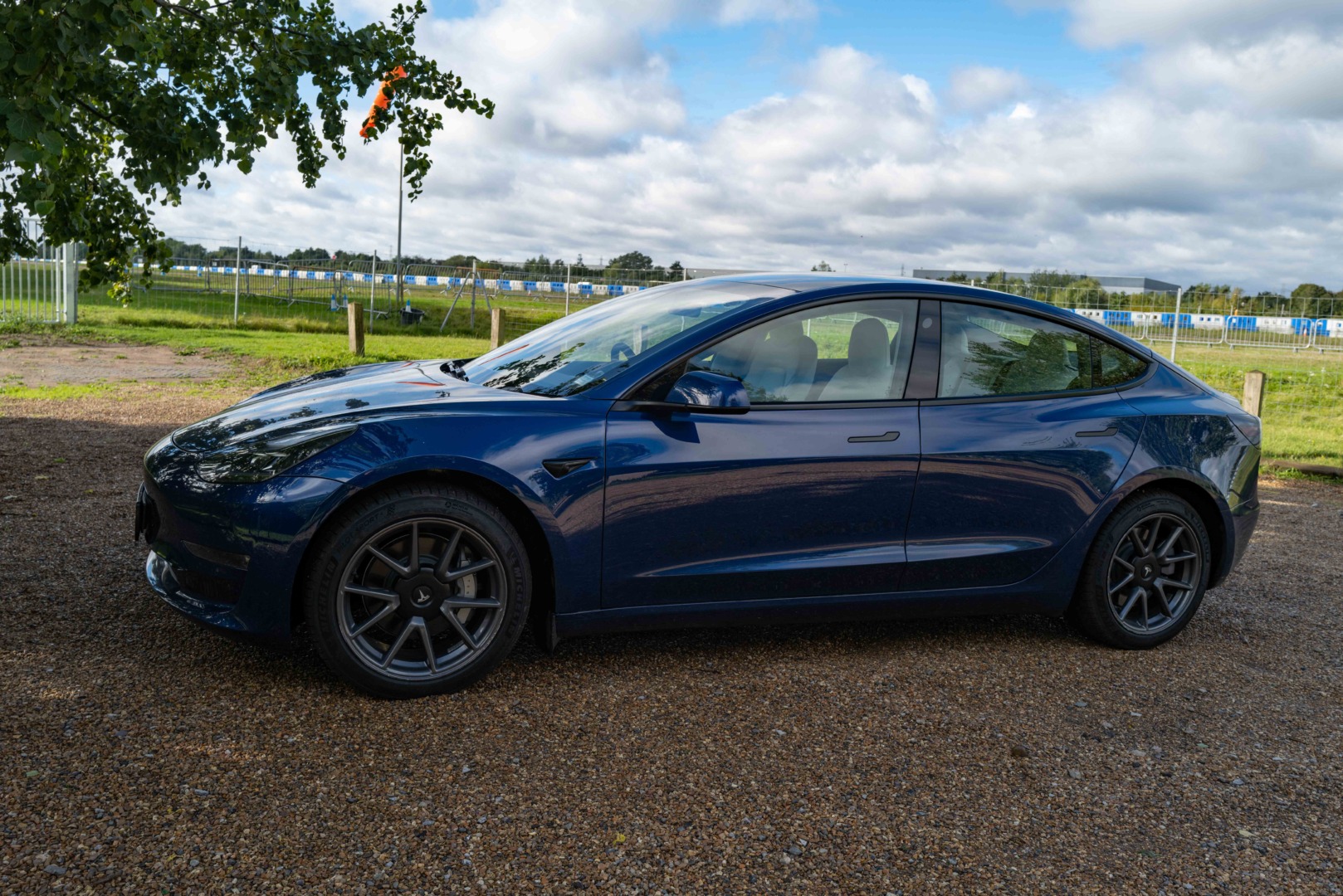
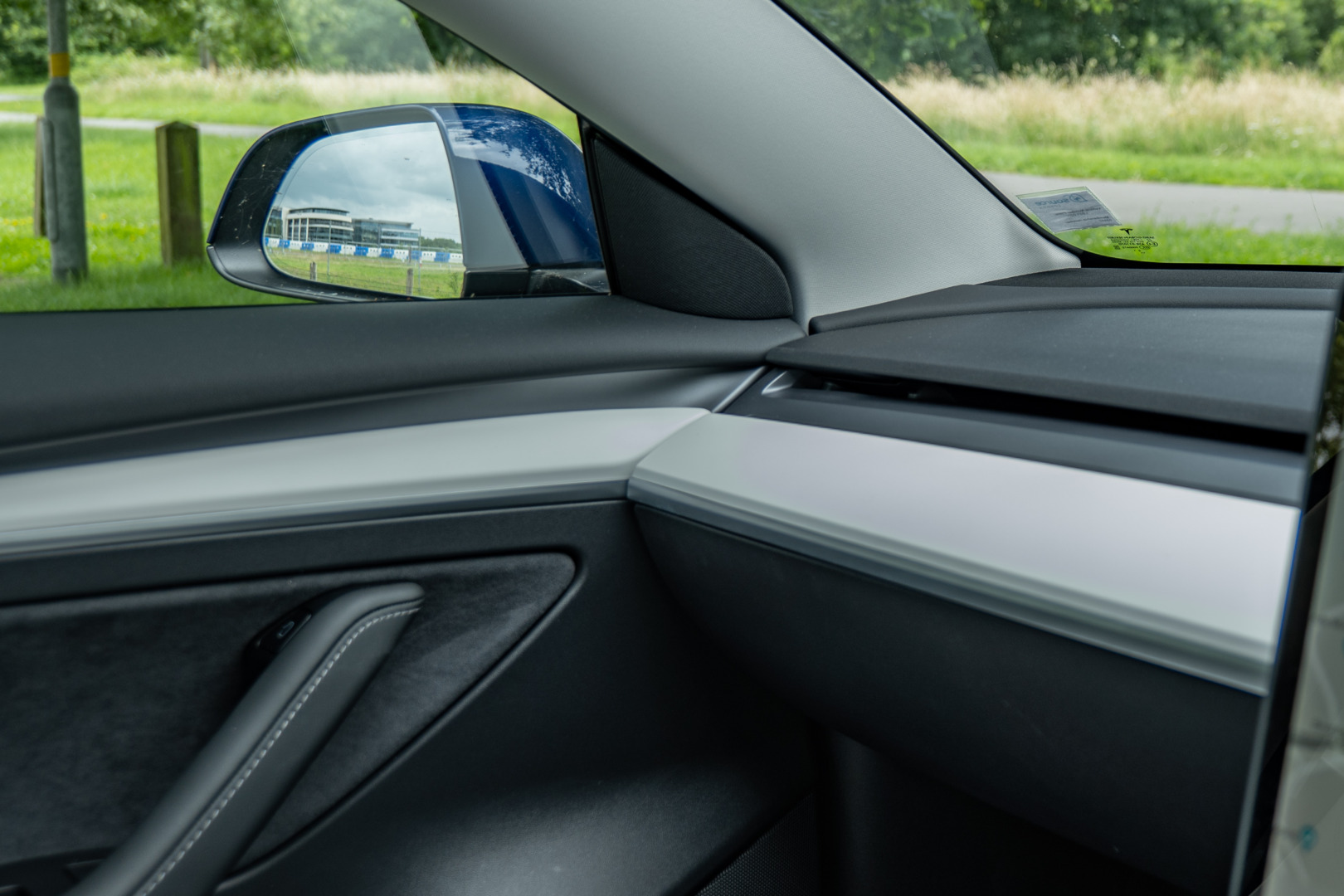
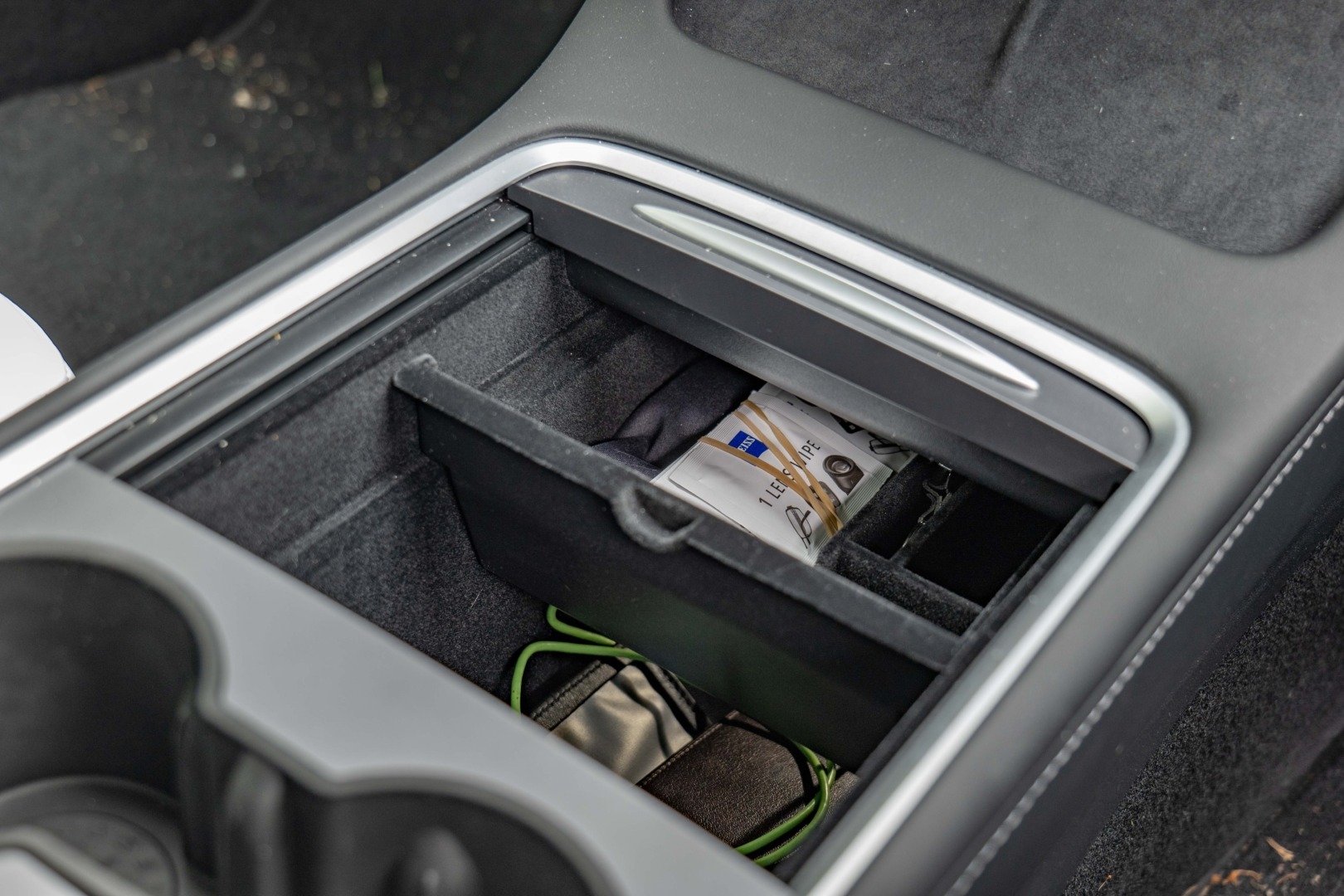
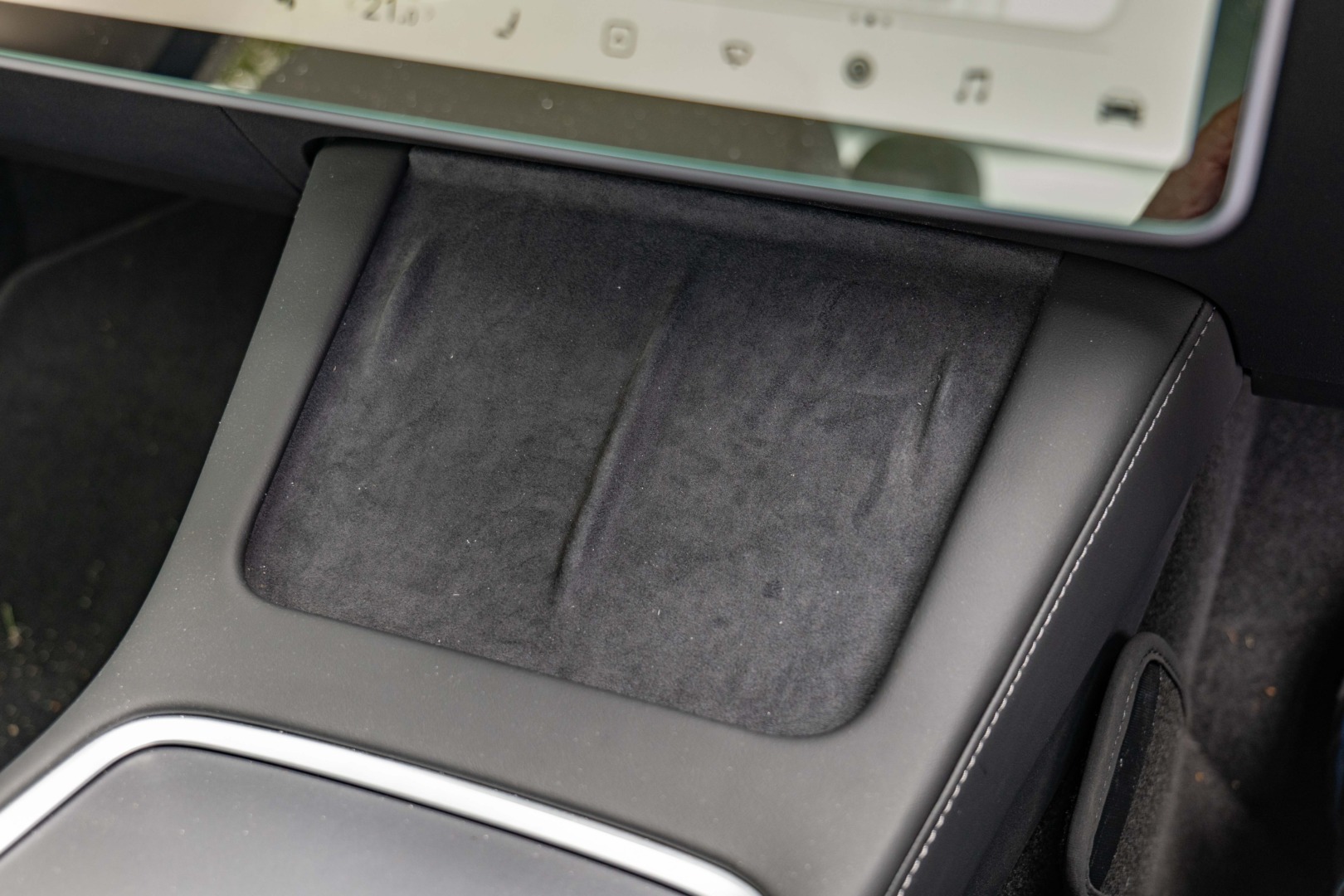

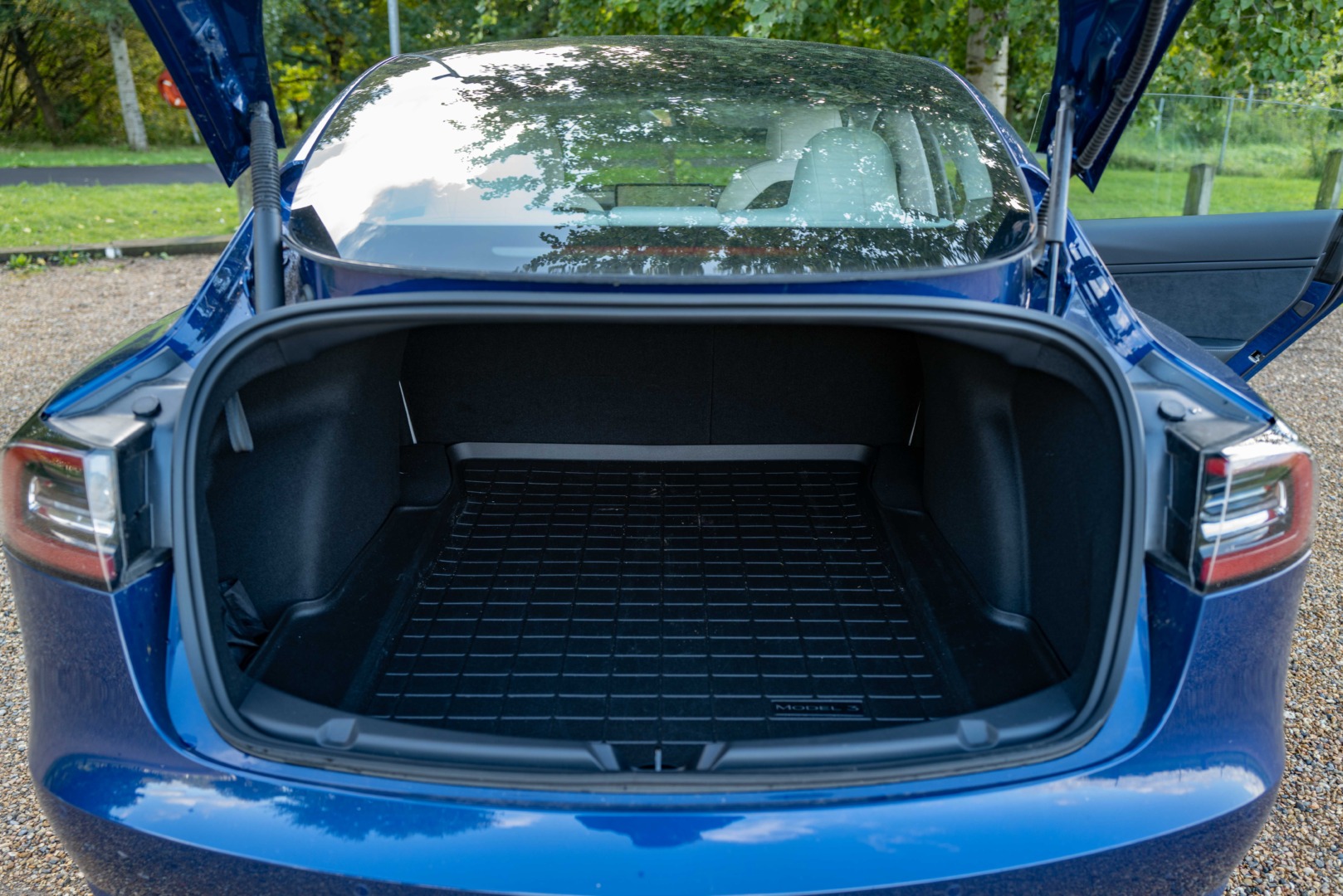
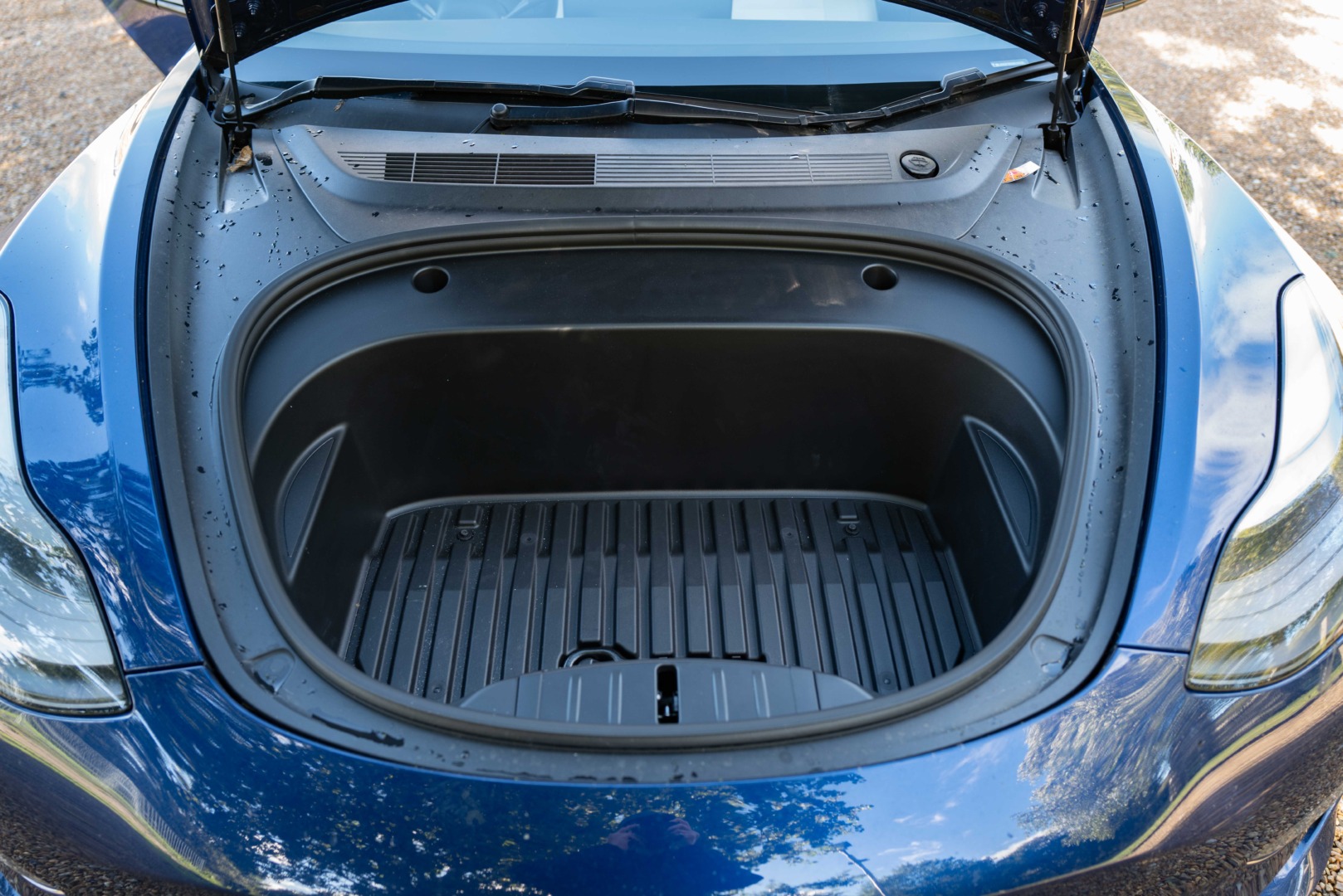
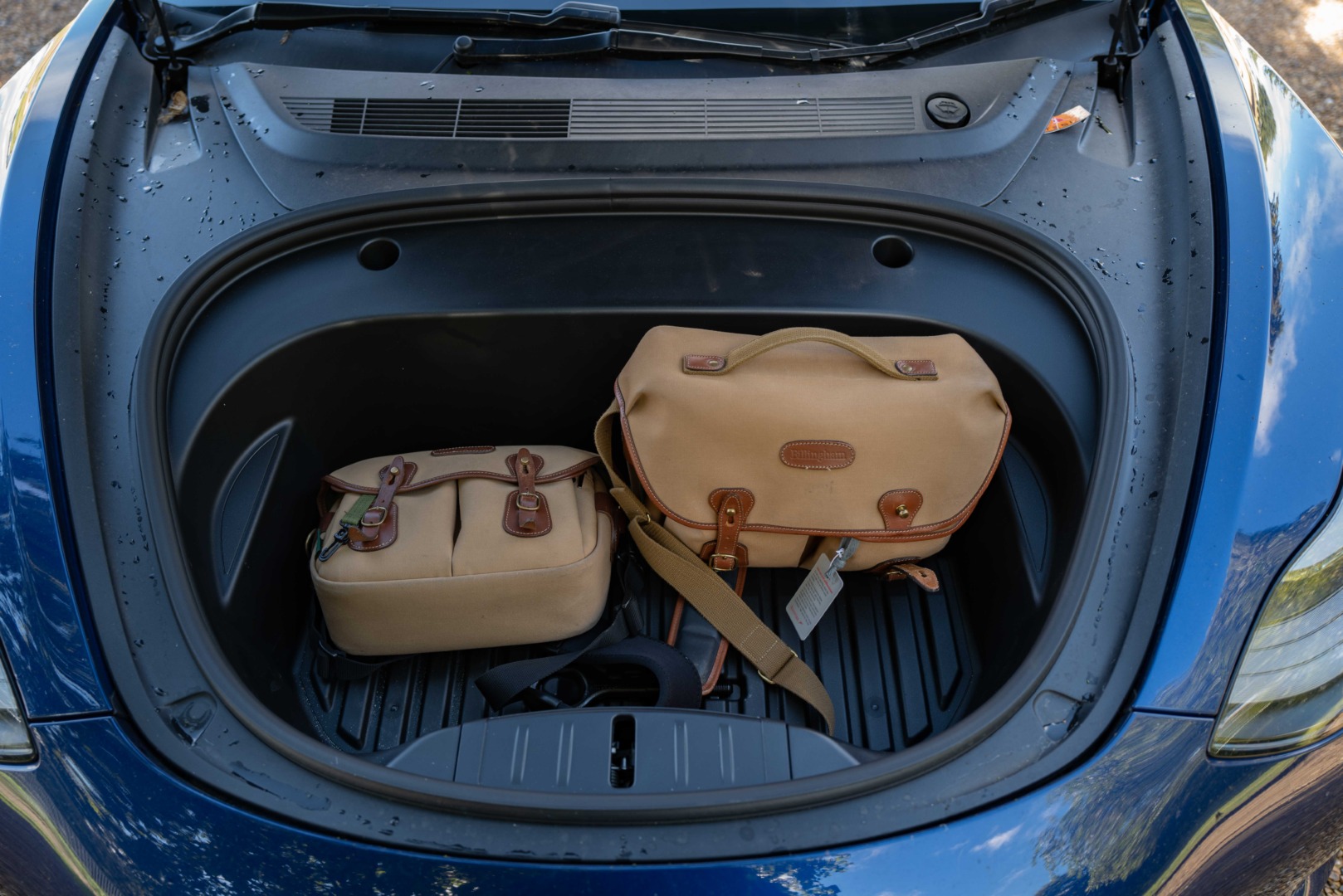
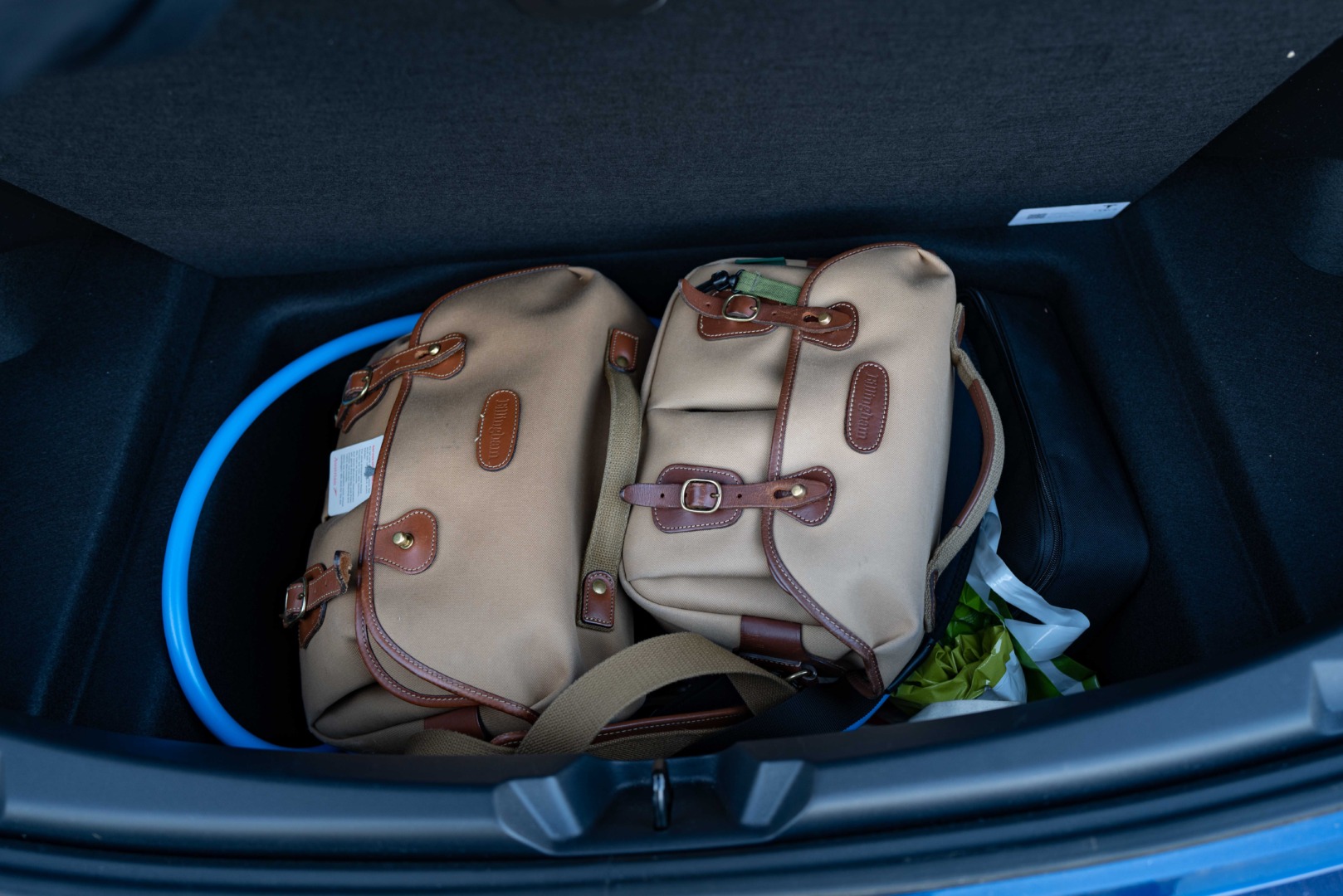
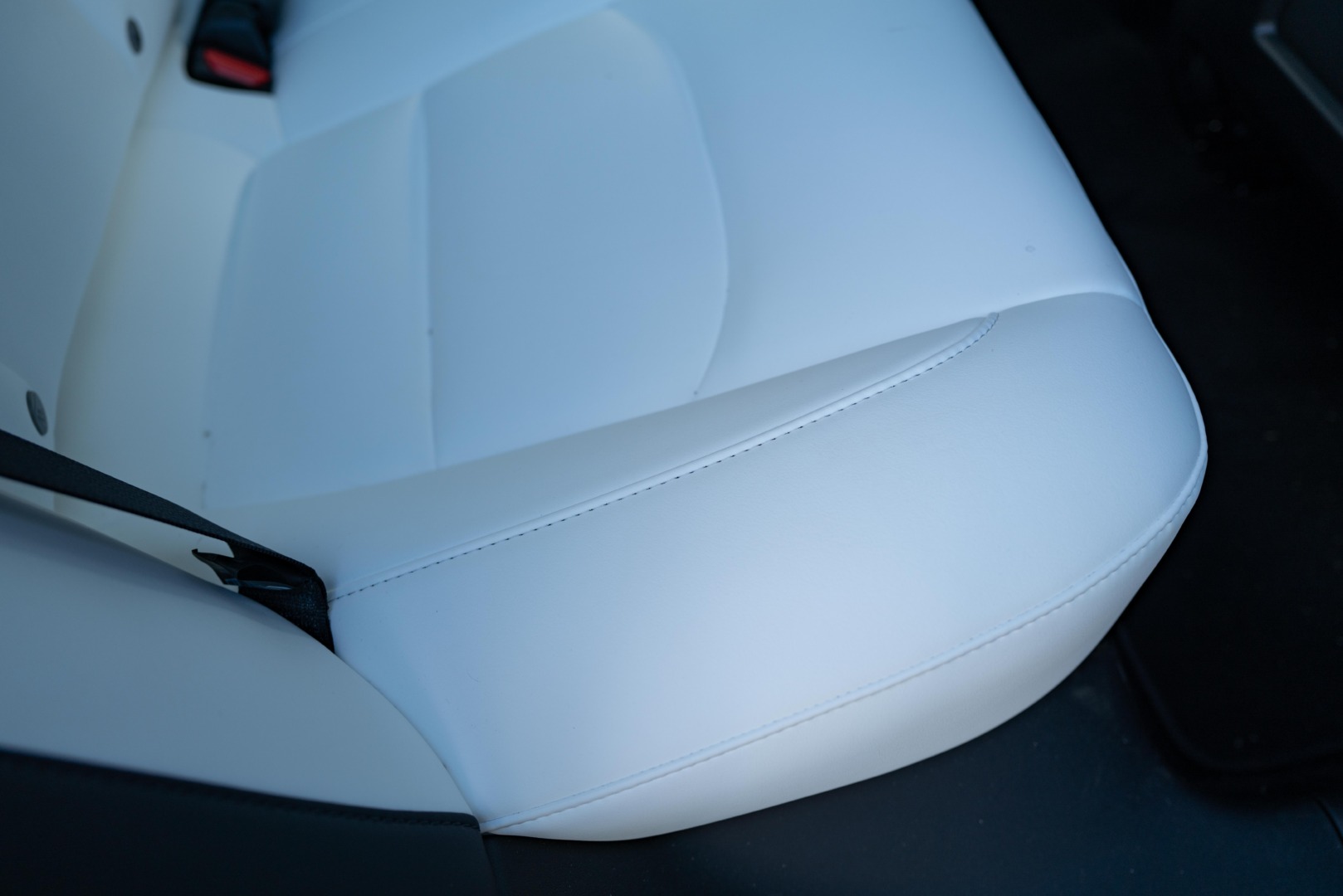
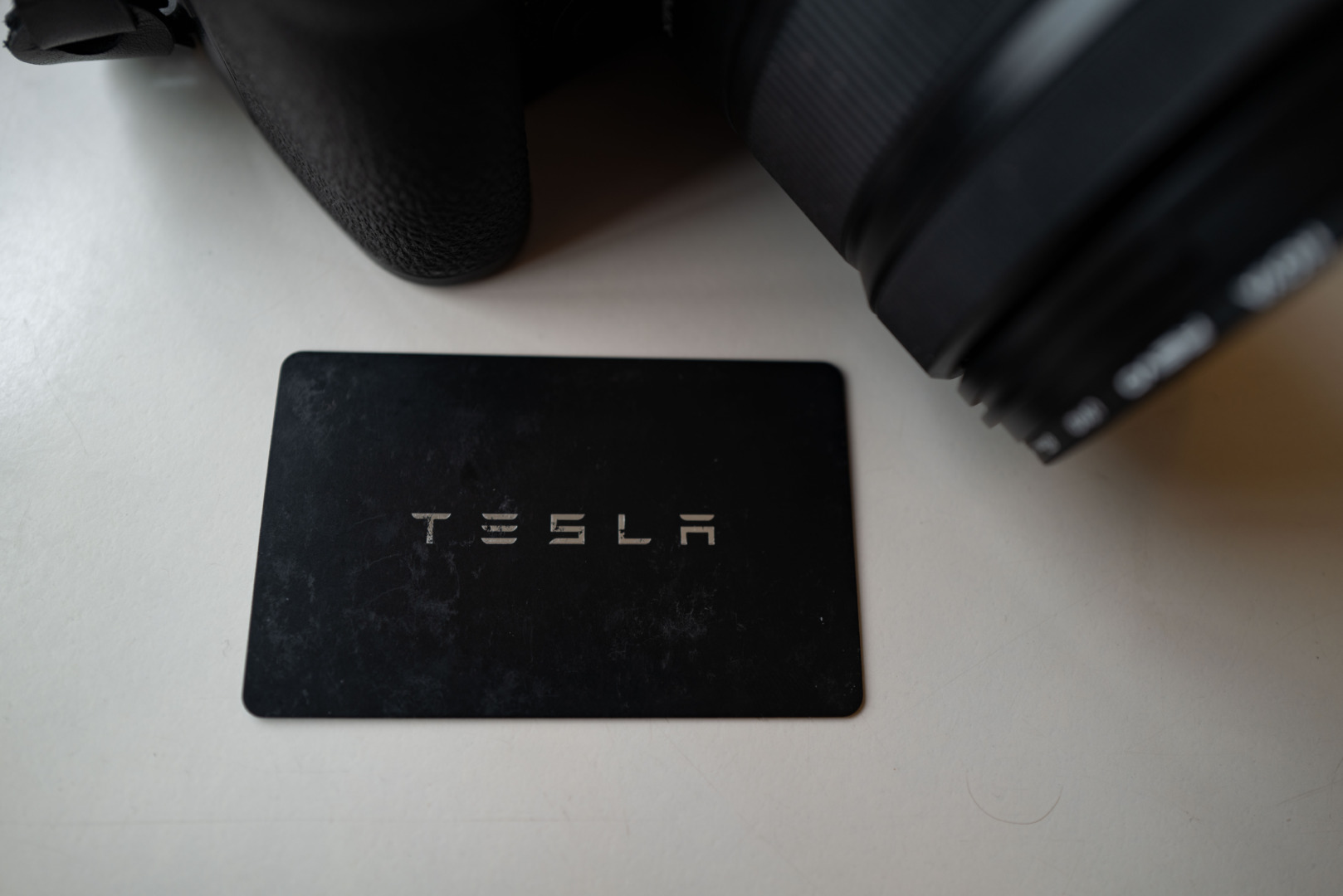
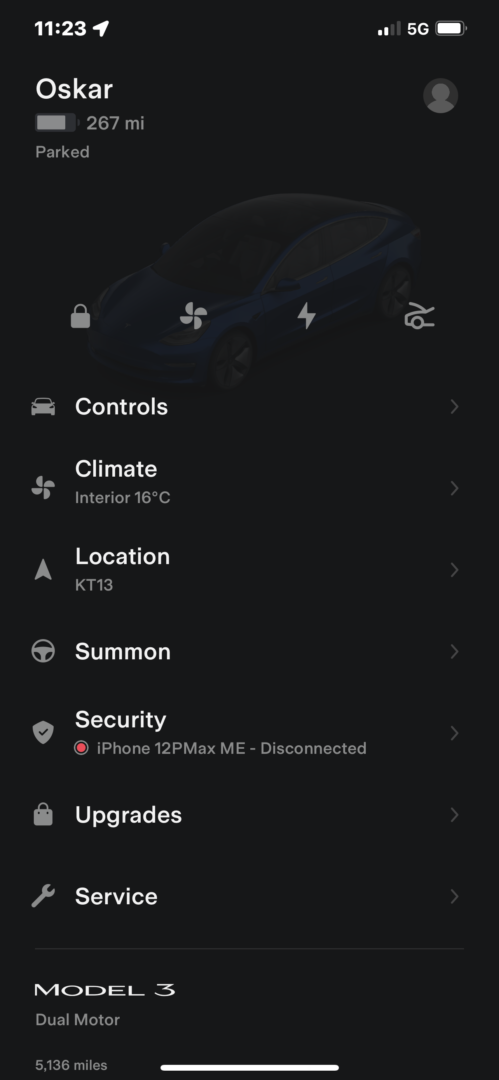

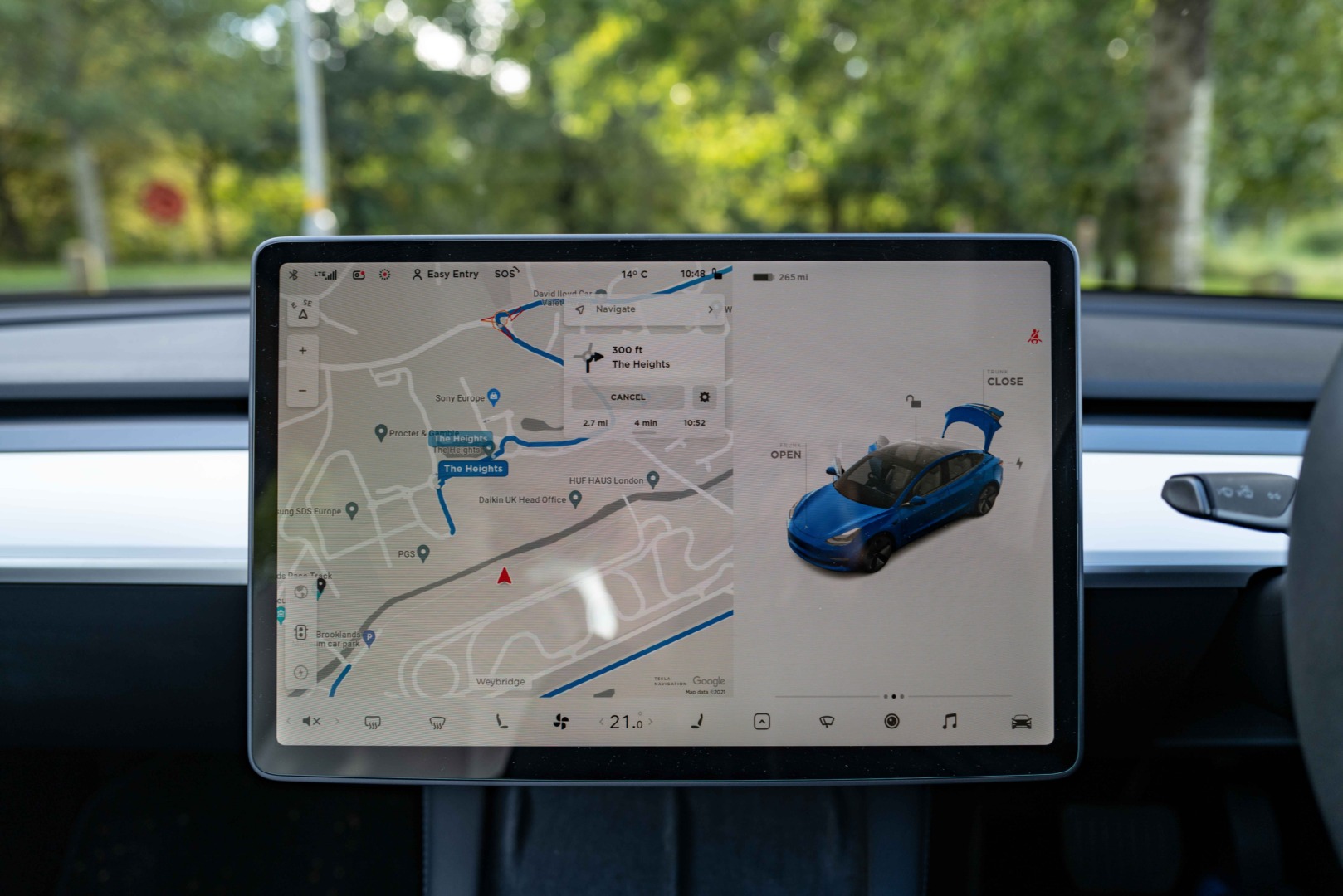
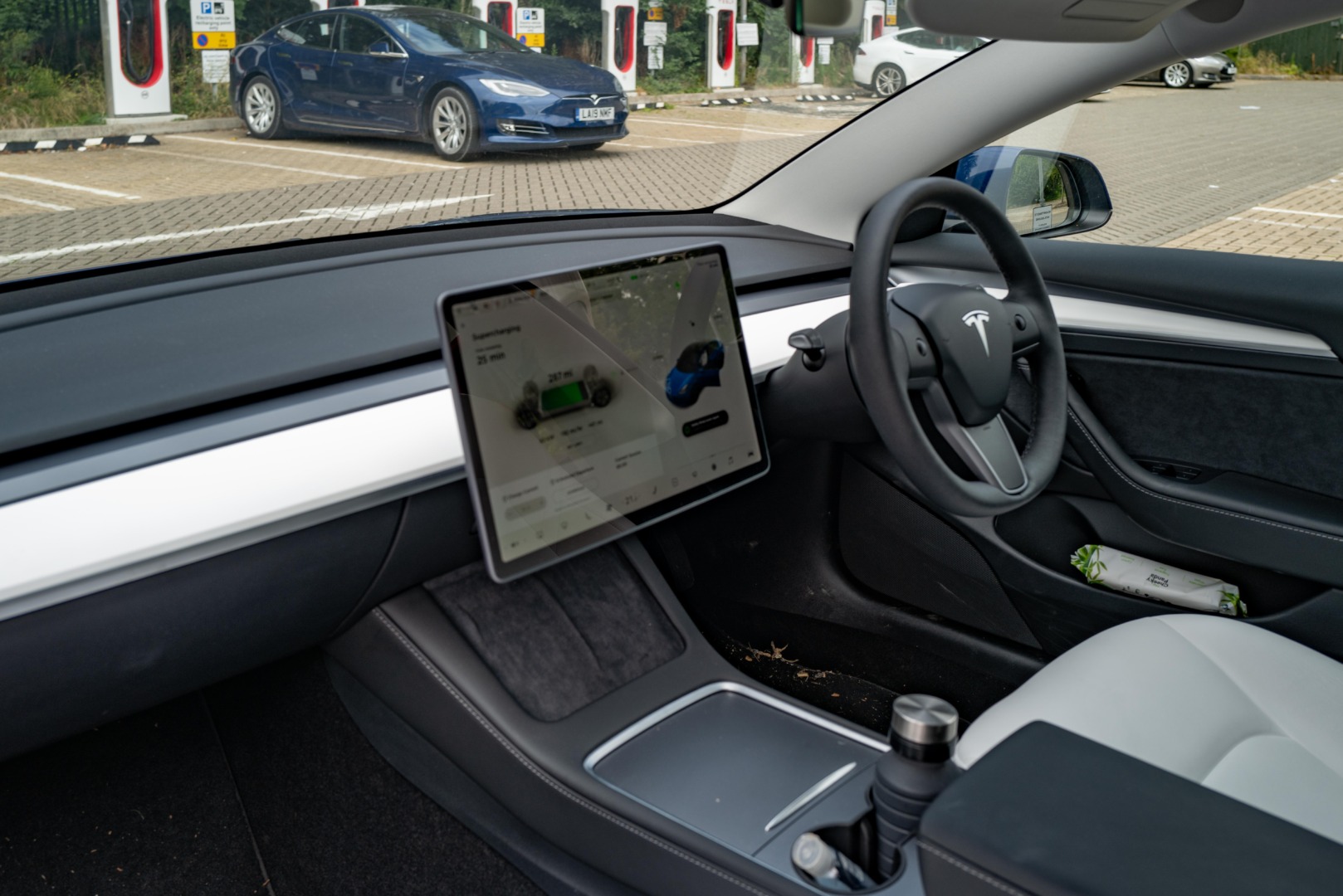
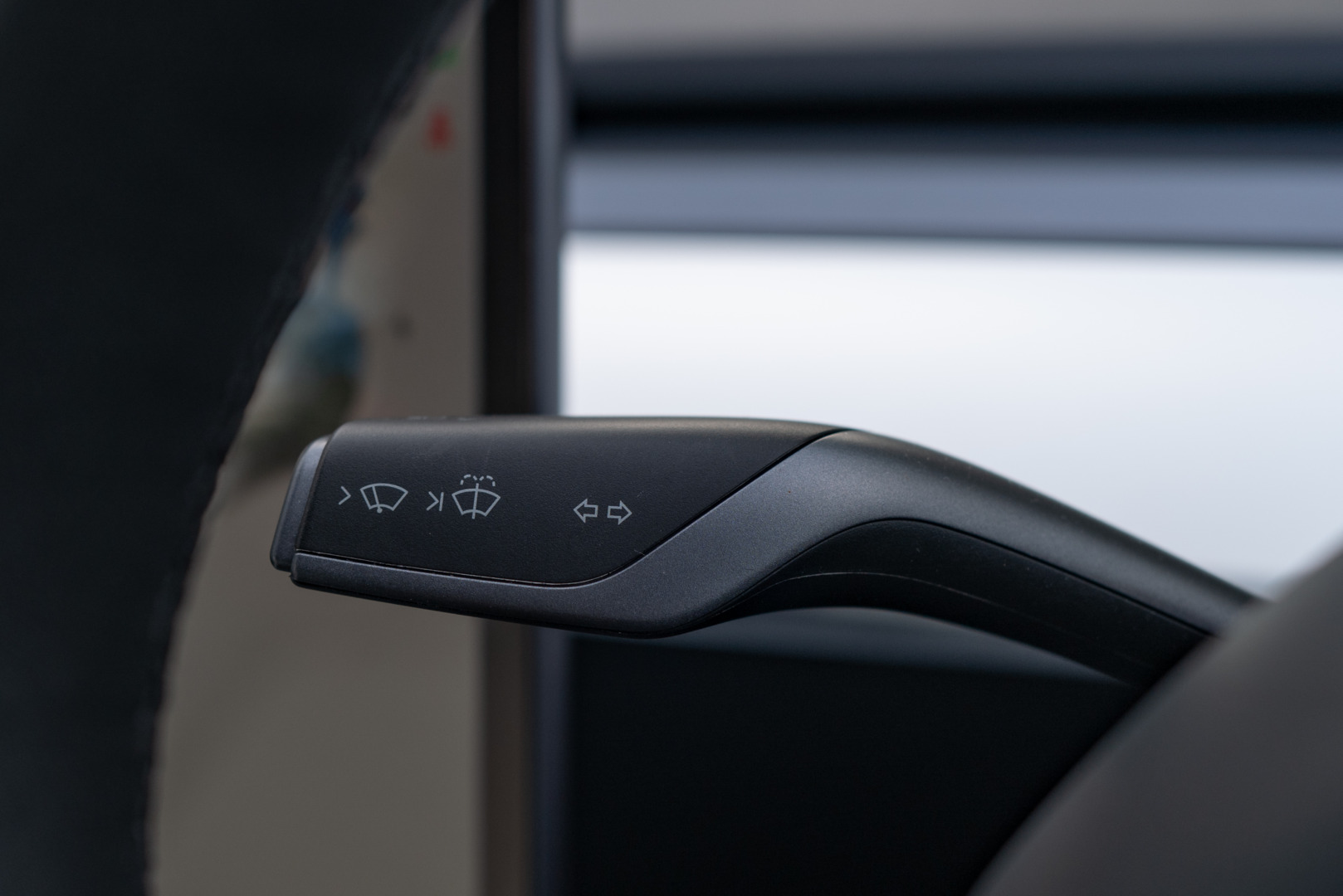
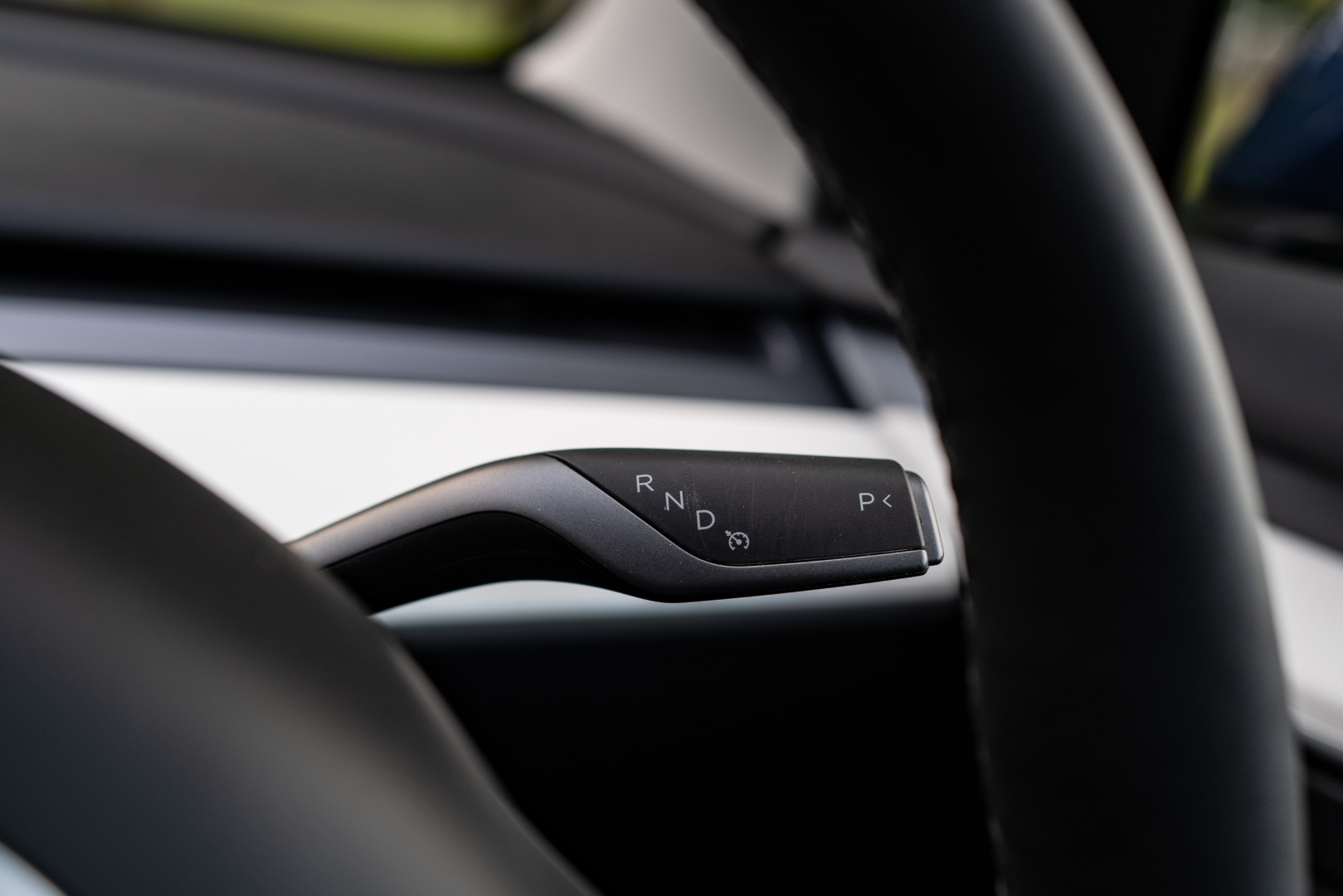
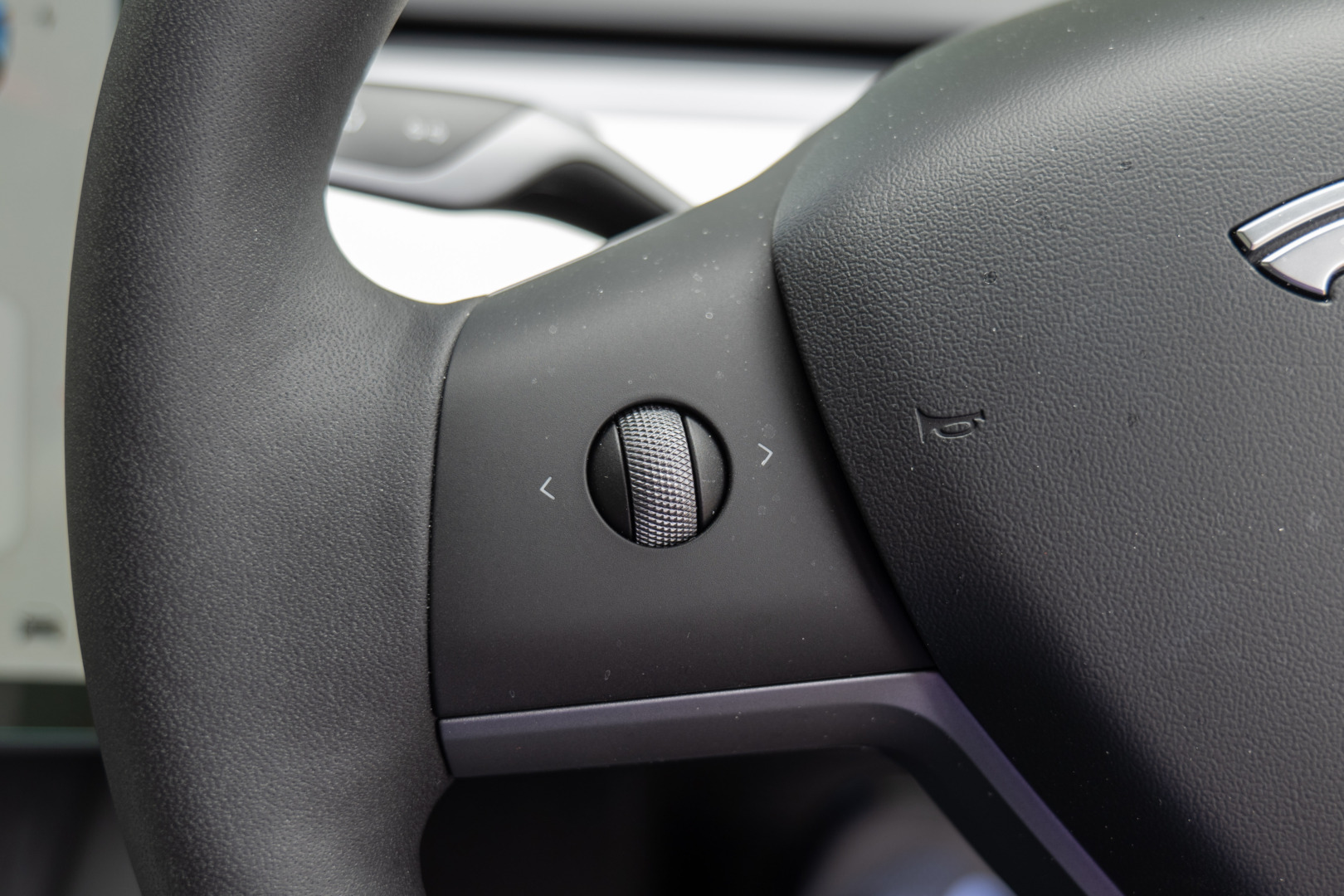
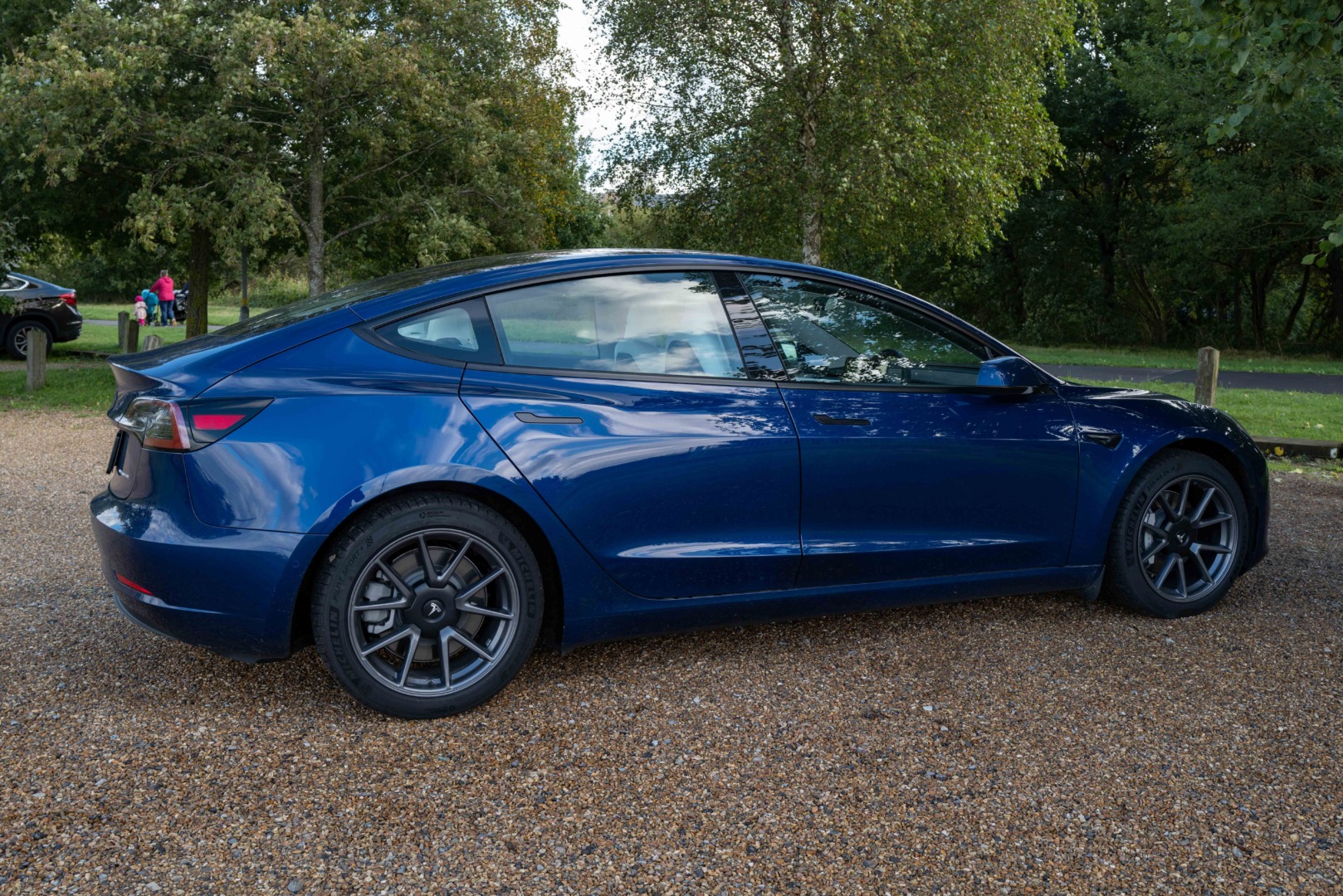
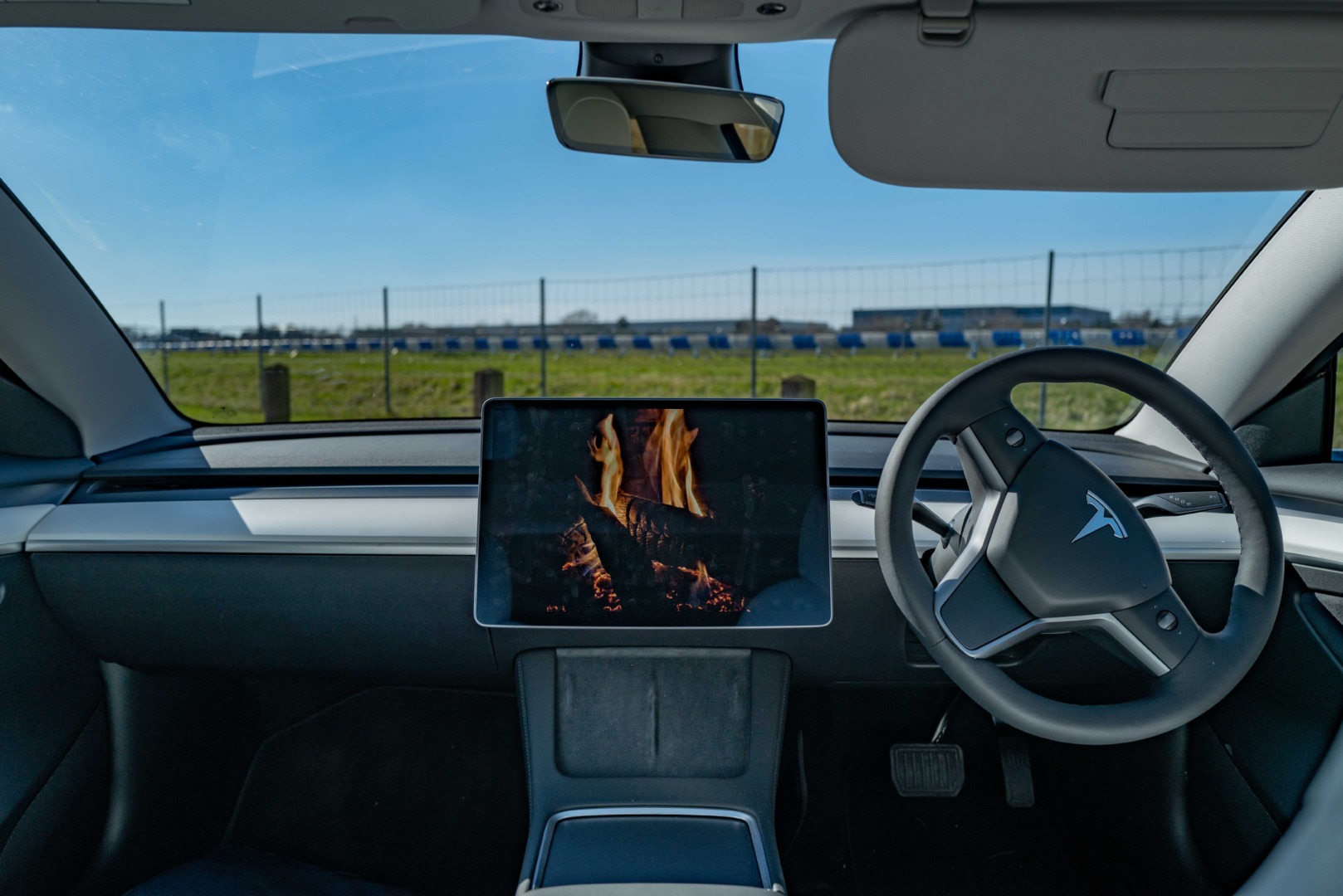
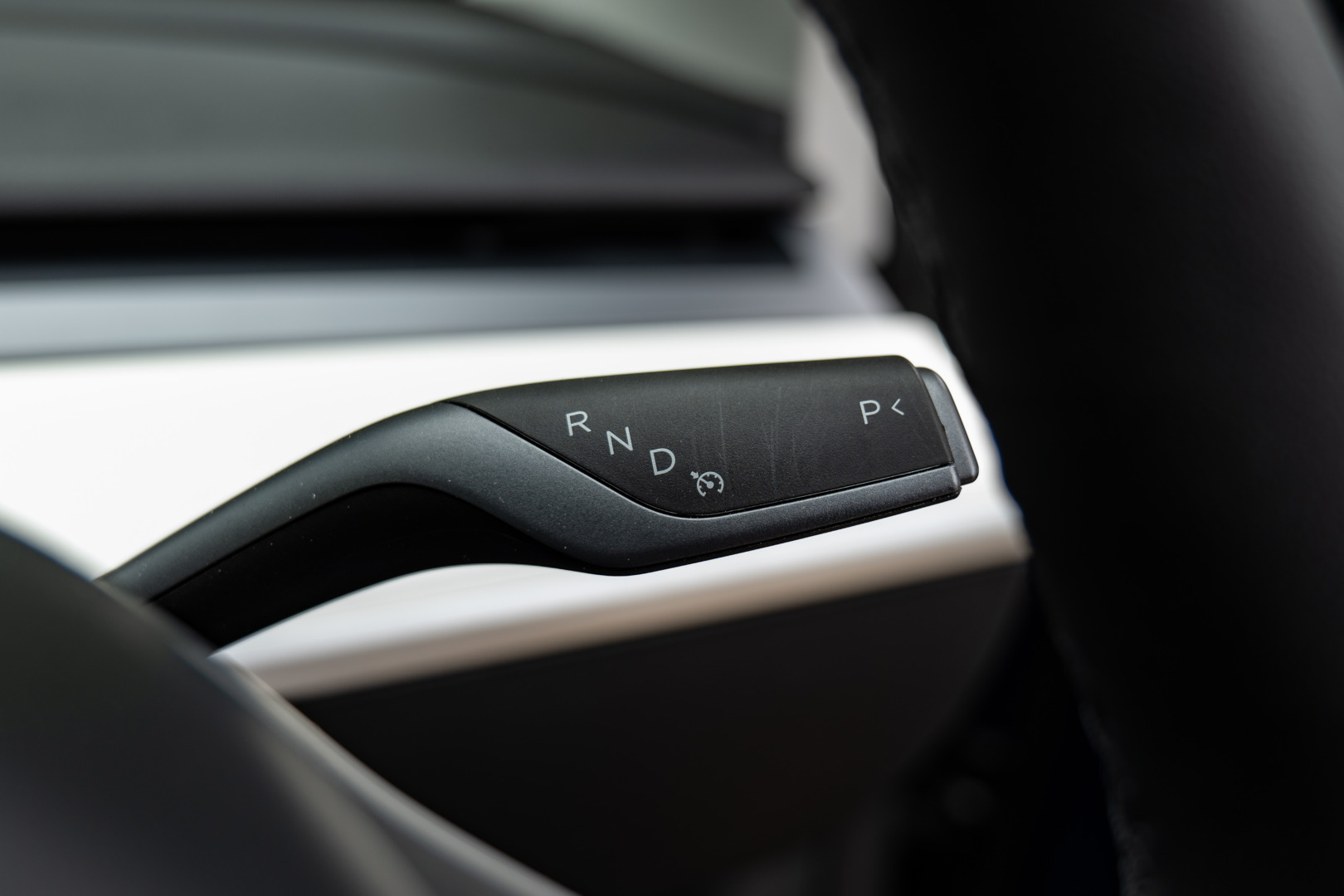


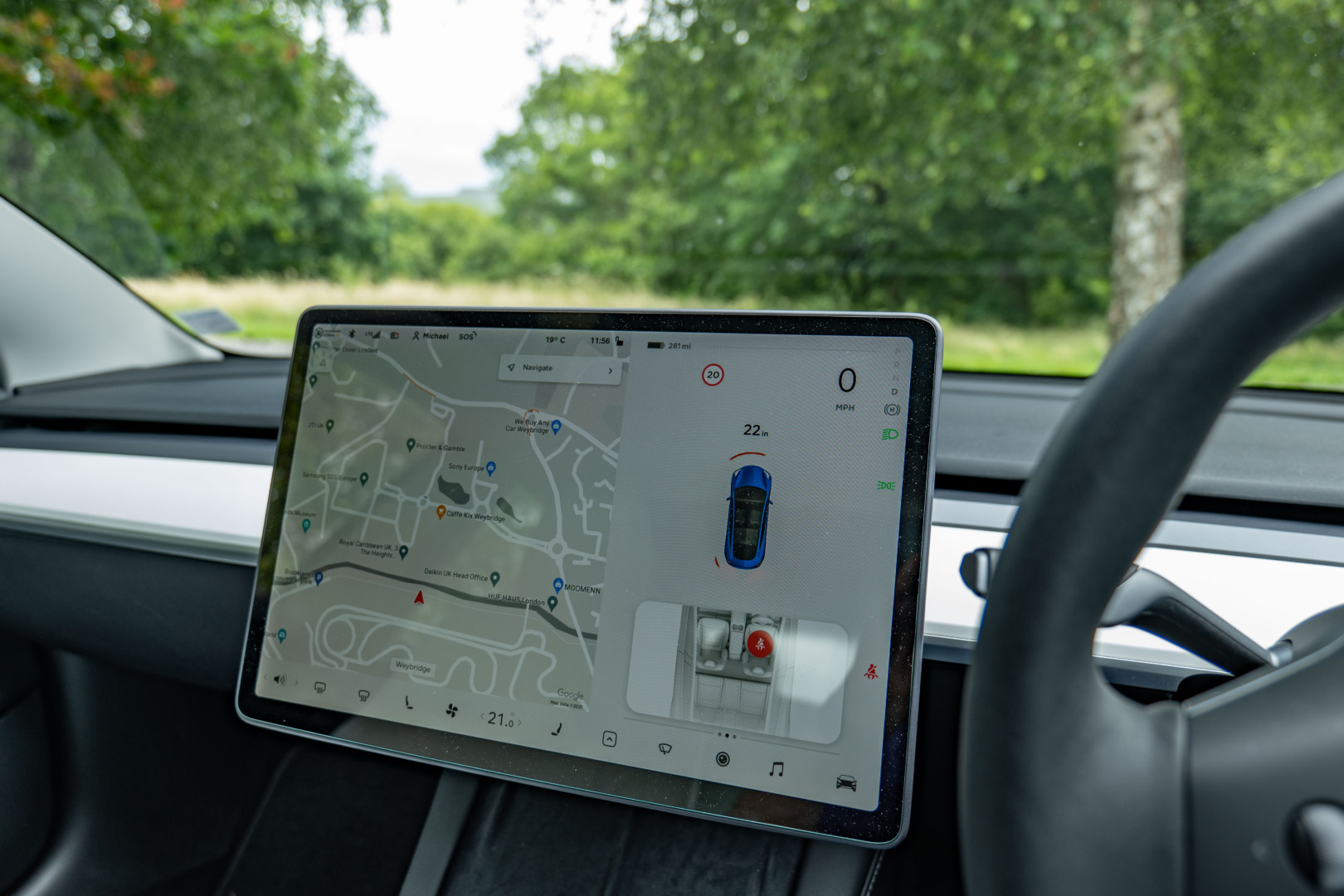
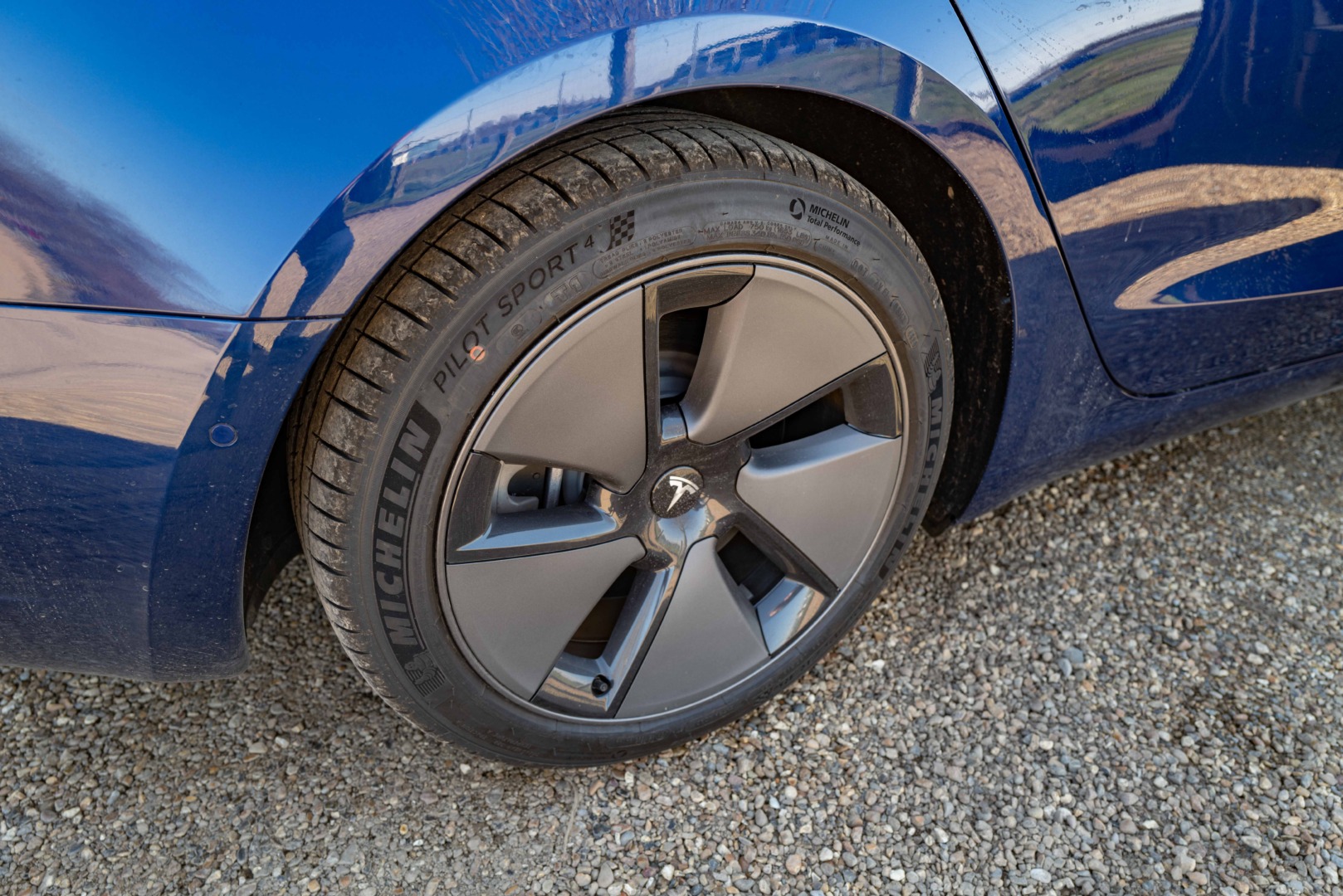
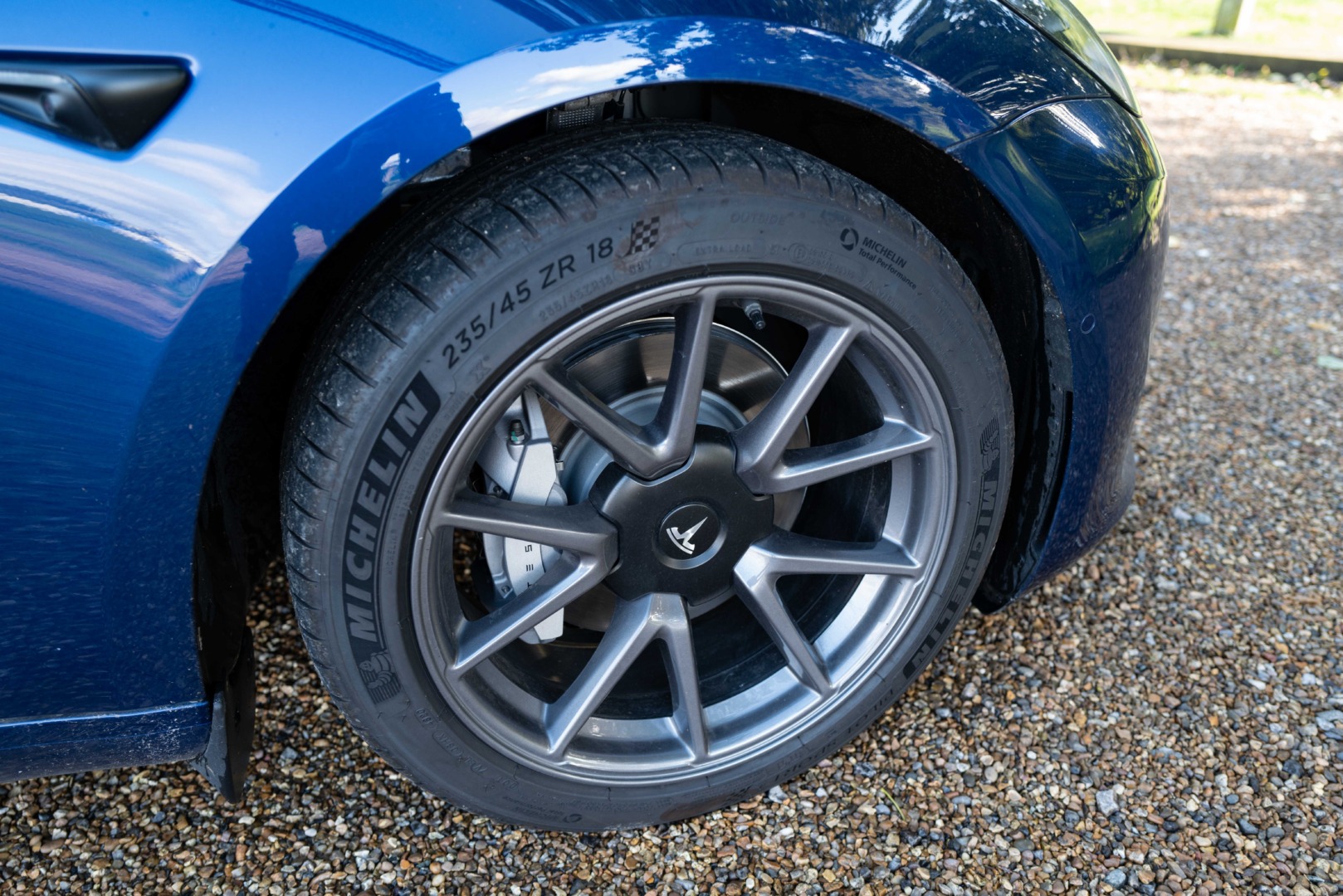
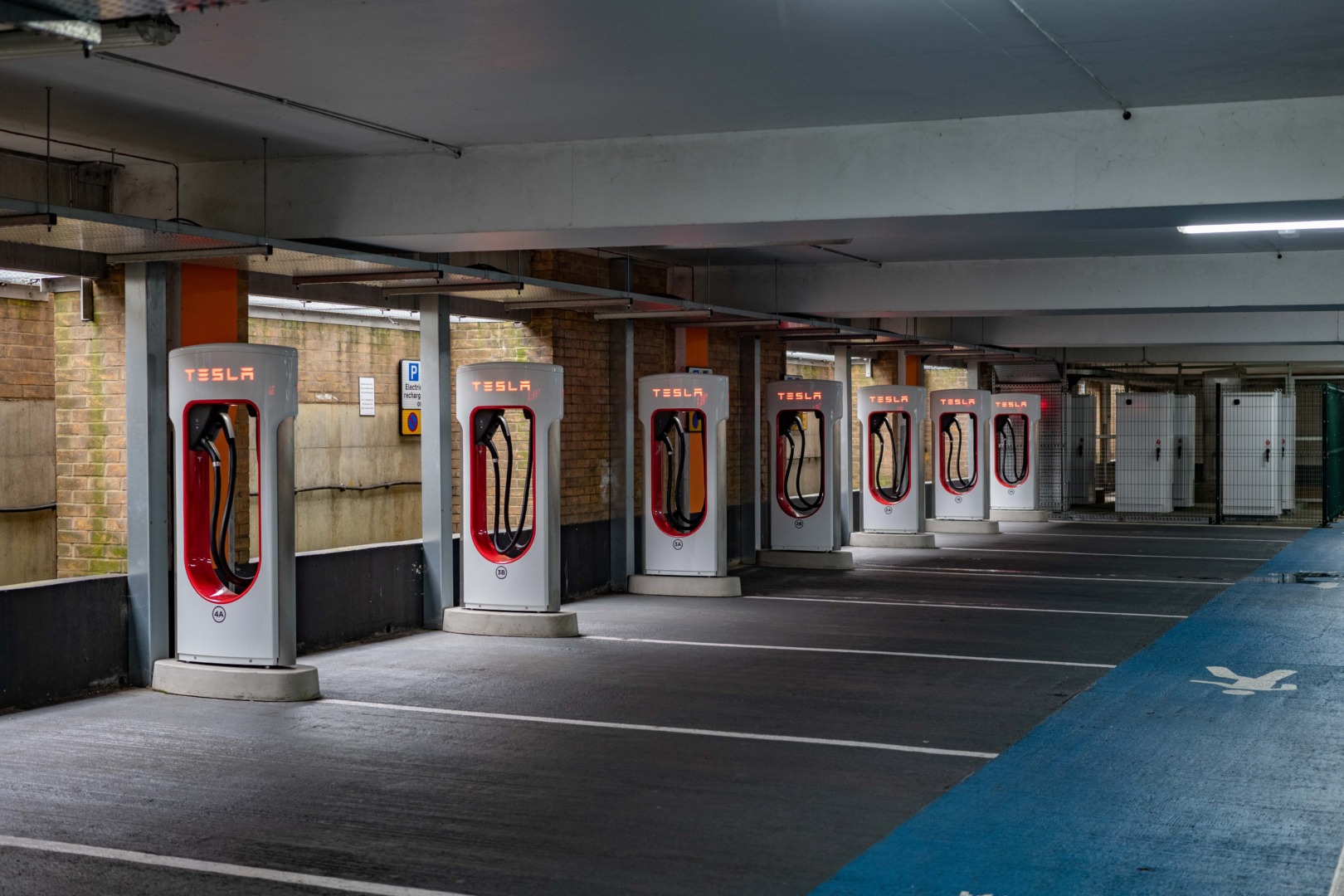
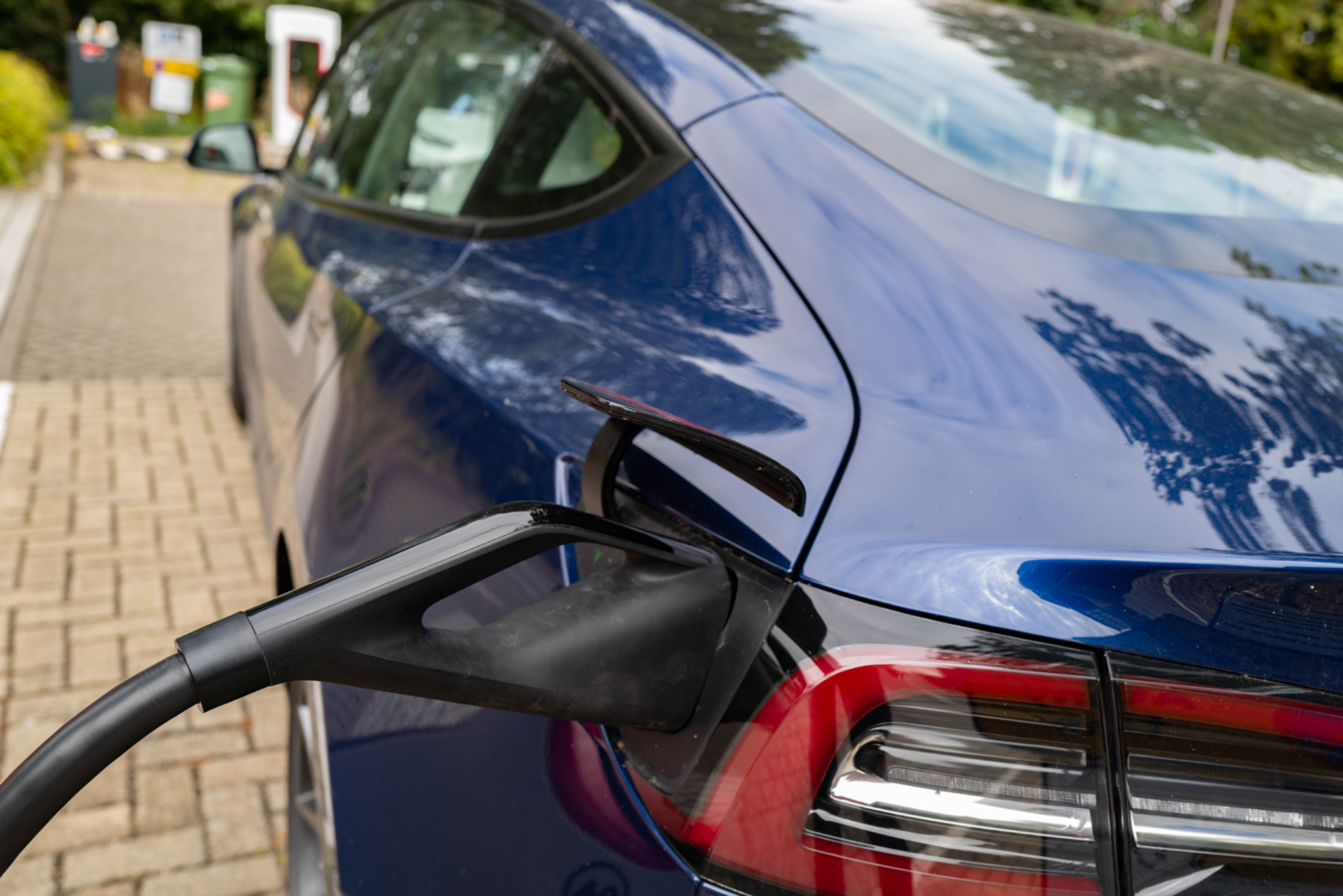
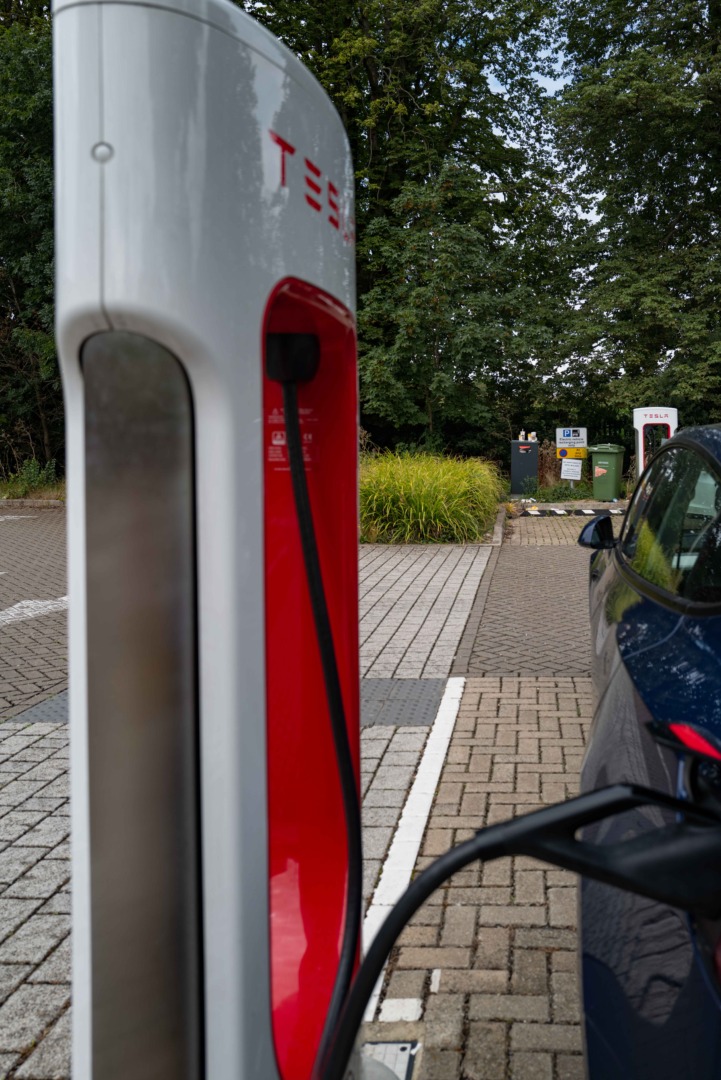
The kinetic power has to be generated somewhere, and under the bonnet is good enough for me.
I would rather know how many miles I have left, than how many minutes, since minutes can magically transform into hours around London*.
I can also store, with the equipment that I already have in the form of a 12 gallon plastic tank handily mounted to the underside of the car during fabrication, many more miles than any battery can hold and deliver on demand.
I don’t think I will be an early adopter.
*(other large conurbations are equally pertinent).
Point taken. But don’t forget that electric cars use negligible fuel when stationary. So you can be stuck for hours in a jam and use almost no fuel. What I need is a portable battery pack to mount under the car. Backup!
Good thing I don’t have that problem. Before the car was delivered the third party contracted by MG installed the home charger in the driveway.
Great article by the way. One thing I too had questions about was the regenerative brakes and whether they caused the brake lights to come on. Good that is cleared up. Most drivers in these parts stick so closely you know.
The other thing I noticed you state the range in miles. The MG then is far behind (official range ~400km, real world full charge range 320km and with AC on that knocks off a further 50km).
Those temperatures are a killer for EVs. They work best in temperate climates such as (coincidentally) southern England. Not too cold, not too hot, so the system doesn’t have to work so hard. I’m not sure, but I think the battery on your car is 45 kWh compared with the Model 3 LR at 60 kWh. So the range is going to be quite a bit less, even though the car might be efficient.
As you probably know, we have a mishmash of weights and measures in Britain. We use miles, miles-per-hour, miles-per-gallon but we buy fuel in litres. Most people haven’t a clue about L/100 km, however, and talk about MPG. At least most of us are bi-measurable.
As a Yorkshire man, my car would be hooked up to the free option often. If someone offered me a free tank of diesel or petrol, trust me I’d take it. Although finding diesel and petrol down here in the SE means none of us have a good deal at the moment. Challenges getting either, and nowhere to charge for those with EV’s mean we are all sharing the same experience. I have great fun watching the chap opposite trying to charge his EV – sorry it is like home sport – first he wrestles a space on the street near enough to his home, and then he works out how to make his electric point reach the car – he has miles of cables now to do the job, regardless of where he parks.
Also it is good to note that Vanity is alive and kicking in the Evans household. Those alloys look so swish, but I’d still stick the covers to go 5% further – just I’d remove them around town when my friends might notice.
They’re a bugger to take off. Need brute force. So they’re staying off, cheaper cost or no.
Charging in the street is much more difficult than people imagine. It isn’t like powering a vacuum cleaner because of the high load. You can’t use extension cables, either. The official cable isn’t that long, so unless you can drive the car up to your front door and plug in directly to a socket (no adapters) you are scuppered. You really need a drive or garage, or you persuade the council to instal a plug in a lamp-post, something you see more often these days. But it must be frustrating to get that and then lose your space next to the post.
Thanks Mike for a well-balanced and interesting read. I do hope you’ll keep the car until at least its first birthday, as I’ll be interested to know how winter driving conditions – with the greater use of lights, wipers, heating/demisting plus the lower ambient temperatures – impact the range, if at all. Also, do you happen to know if the regeneration triggers the brake lights? A friend who’s just become the proud owner of a new Leaf finds the deceleration on that quite sharp when using regen, leading to some occasional dramas astern, which have set him pondering the question I can’t seem to find an answer to.
Thanks, Tony. I understand (from reading the experience of others) that the brake lights do respond to regenerative braking. I assume there is some algorithm that determines when this takes place. In most cases, the driver learns to ease the throttle as an almost reverse brake; in such instances, I suspect, the lights do not come on. However, sudden braking by removing the foot from the accelerator probably does trigger the lights. All this is supposition because I’ve not observed other cars. It’s something I’ll try to do, although you can never be sure that the driver hasn’t touched the brake pedal. I am relying on Tesla having considered all this and fixed the parameters accordingly. One thing is for sure, regen braking does trigger the brake lights in appropriate circumstances.
Cheers, Mike. I’d imagine it’s a similar system to a current F1 car’s, which I think shows a red light at the back when it’s off the power (i.e. regenerating), but haven’t seen it mantiioned anywhere with road cars. The new Leaf owner was treating the throttle as an on-off switch when I was ‘treated’ to a ride – hopefully a little more finesse now prevails!
Yes, in many ways the accelerator works on the same way as that handle in an old tramcar. One way for go, the other for brake. It’s a strange sensation and very difficult to explain, but I find it immensely smooth, progressive and entertaining.
It’s a very attractive package. I recently helped a neighbor choose her next car. We looked at conventional, hybrid and pure EV’s and the best choice for her was the Tesla 3. She got the basic version as all of her driving is in town, so range is not an issue and roads are ploughed at least daily when there’s a snow fall.
I drove it as well and thought it was terrifically easy to get used to including regenerative braking. The EV and range thing is still not there for me as we travel frequently to see family who are 275-300 miles away in rural Michigan. By the time you take into account winter temperatures that can fall to -10F and the increased possibility of accidents on highways due to bad weather, the range feels marginal. In addition last last couple of miles are on dirt roads which are not ploughed, so AWD and raised or air suspension for added ground clearance are valued. Maybe in 5 years time a vehicle which offers those options will be available, until then it’s gasoline for me.
Thanks. I agree that EVs are not currently for everyone. It’s different in a small country such as Britain, but even here there is a shortage of charging points in many areas. For instance, from my experience, I could find no fast chargers in Wales other than on the north and south coasts. So you are probably stuck with an ICE for some years to come, but your time will come.